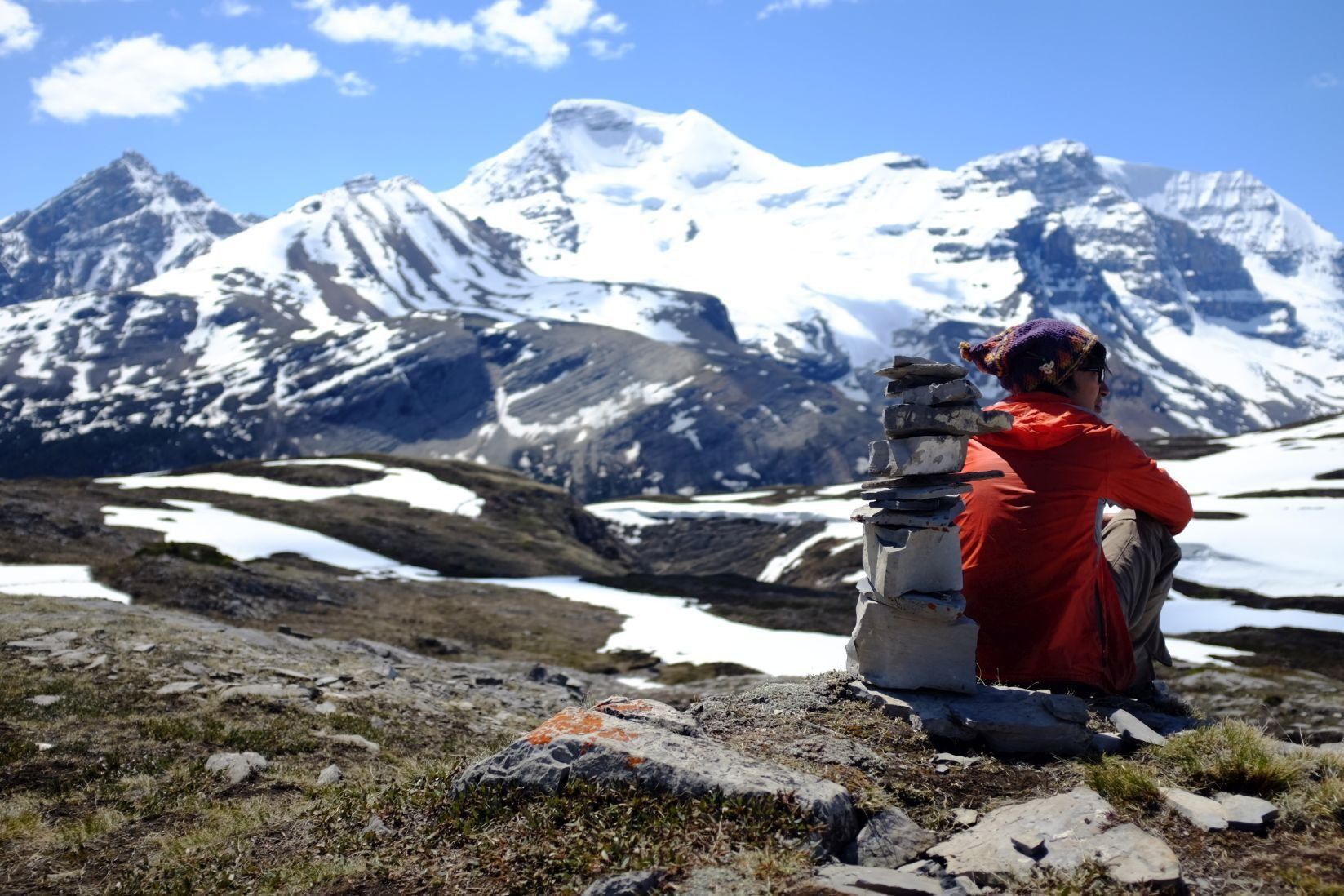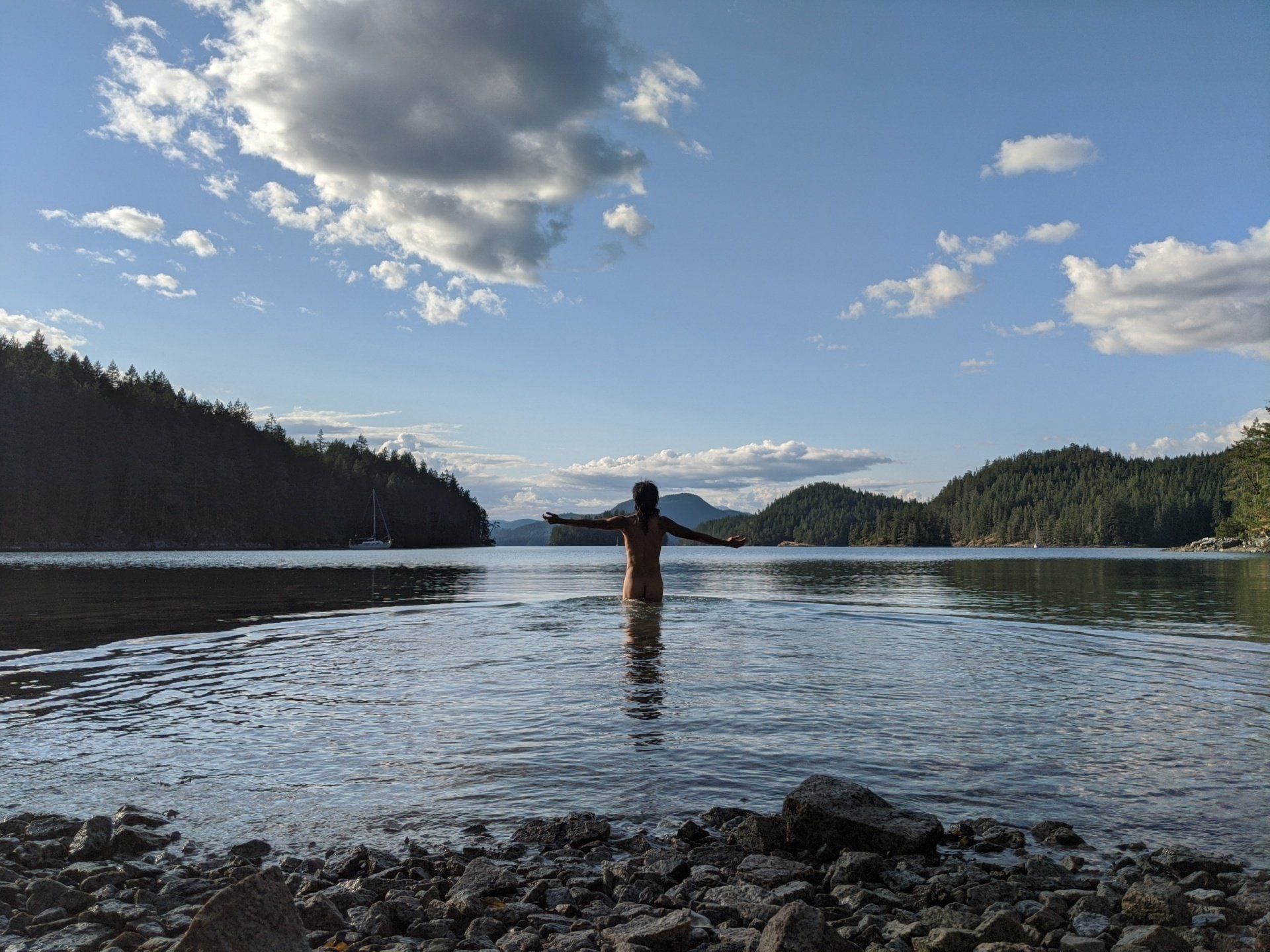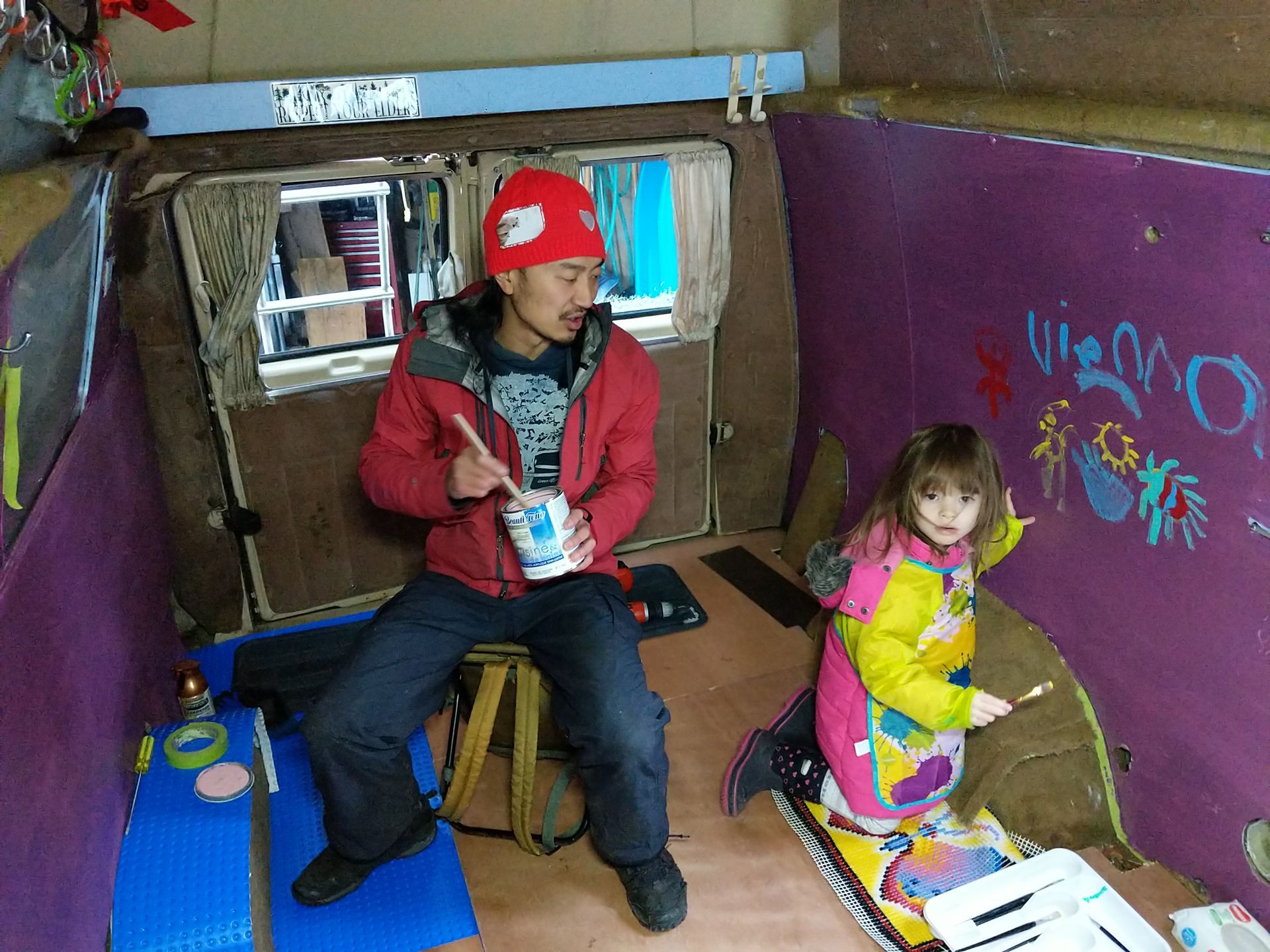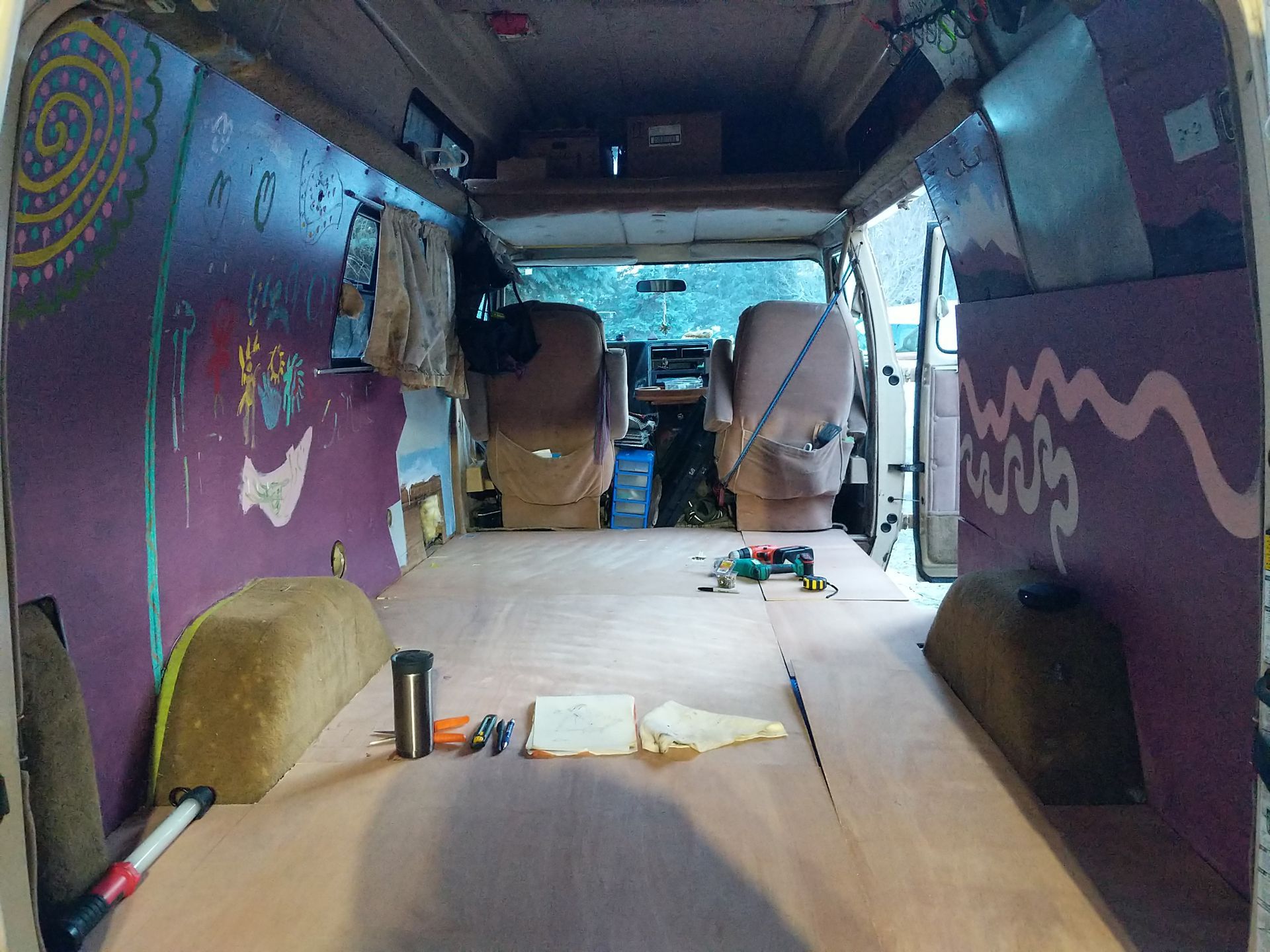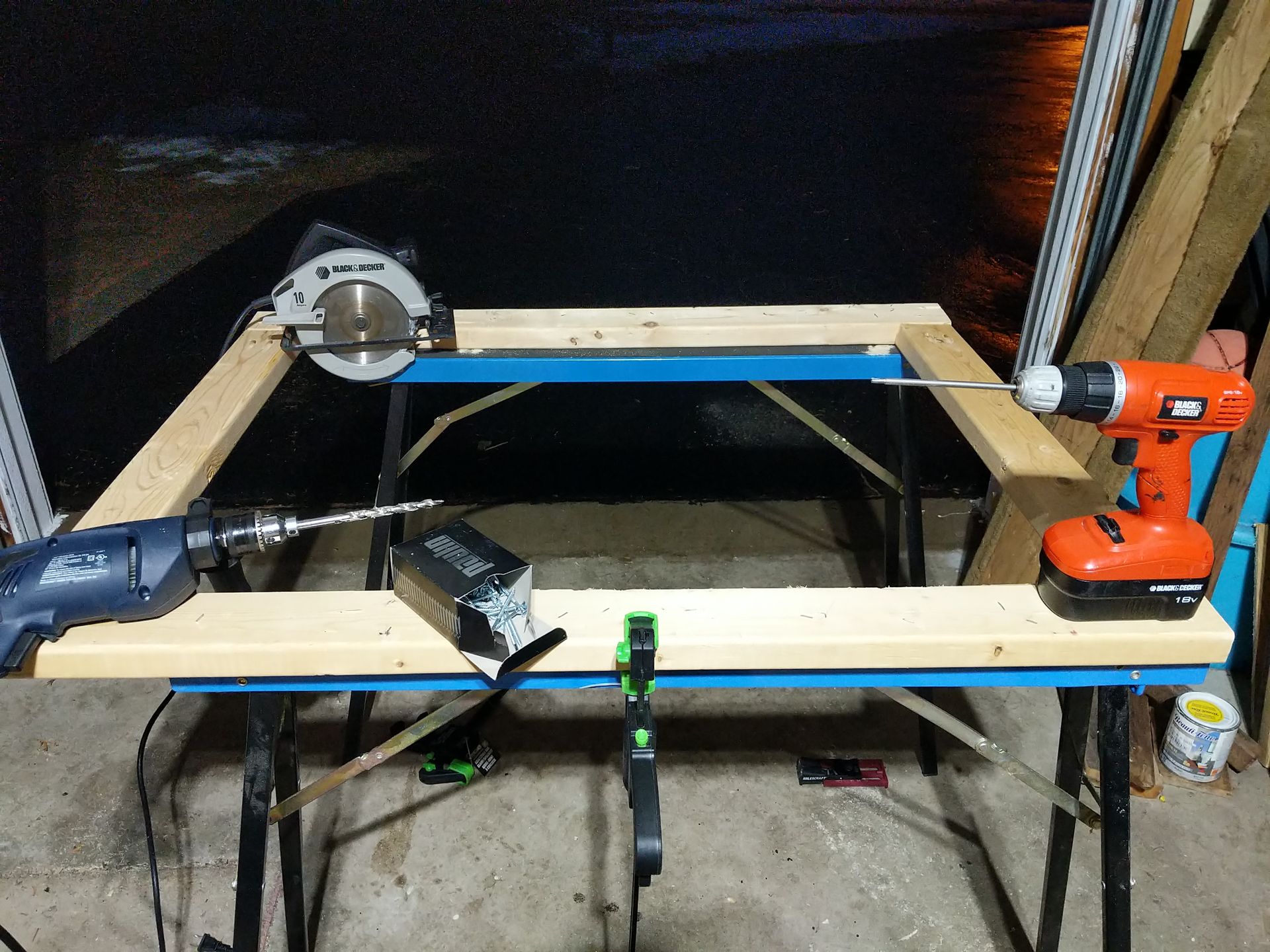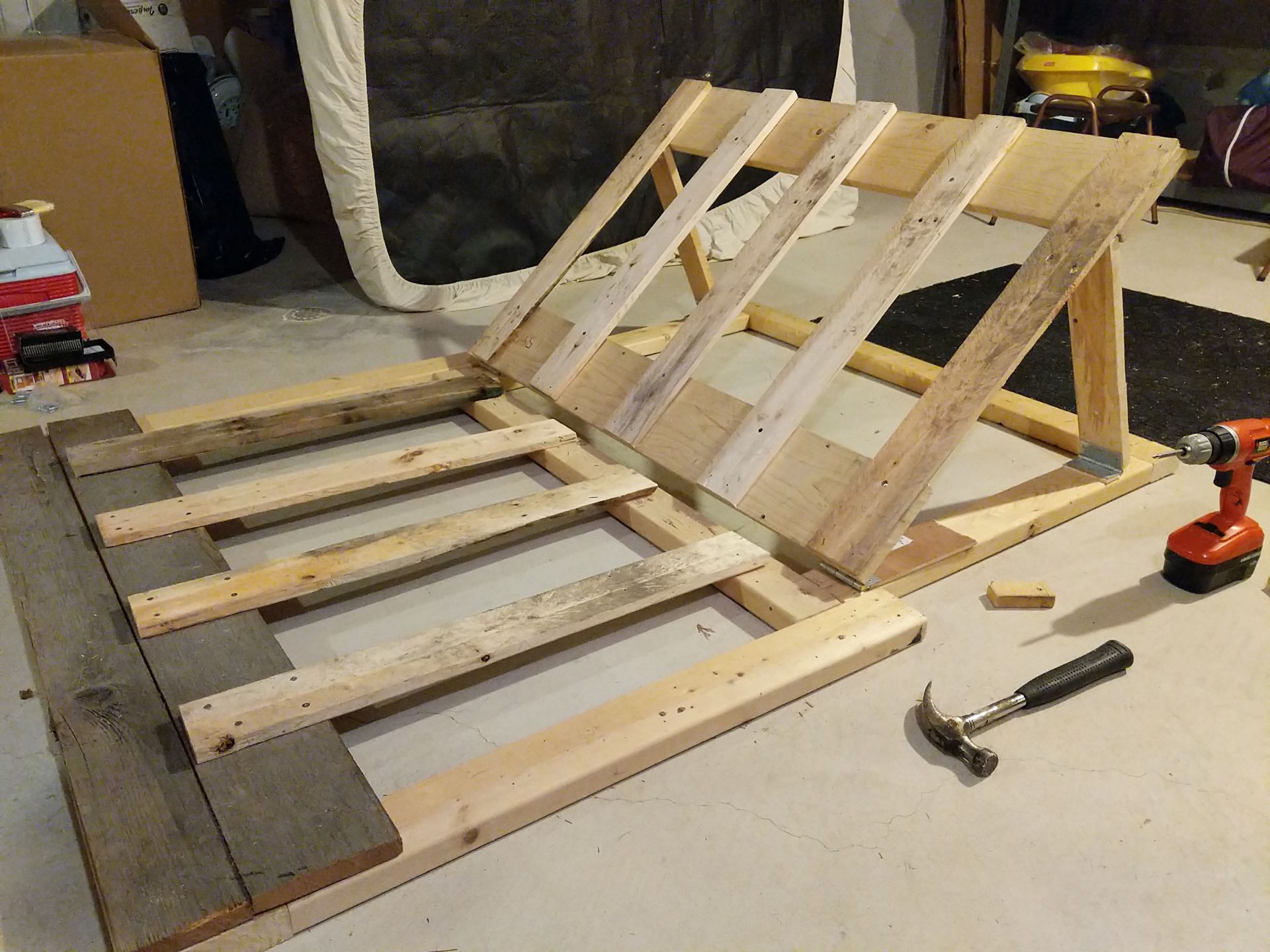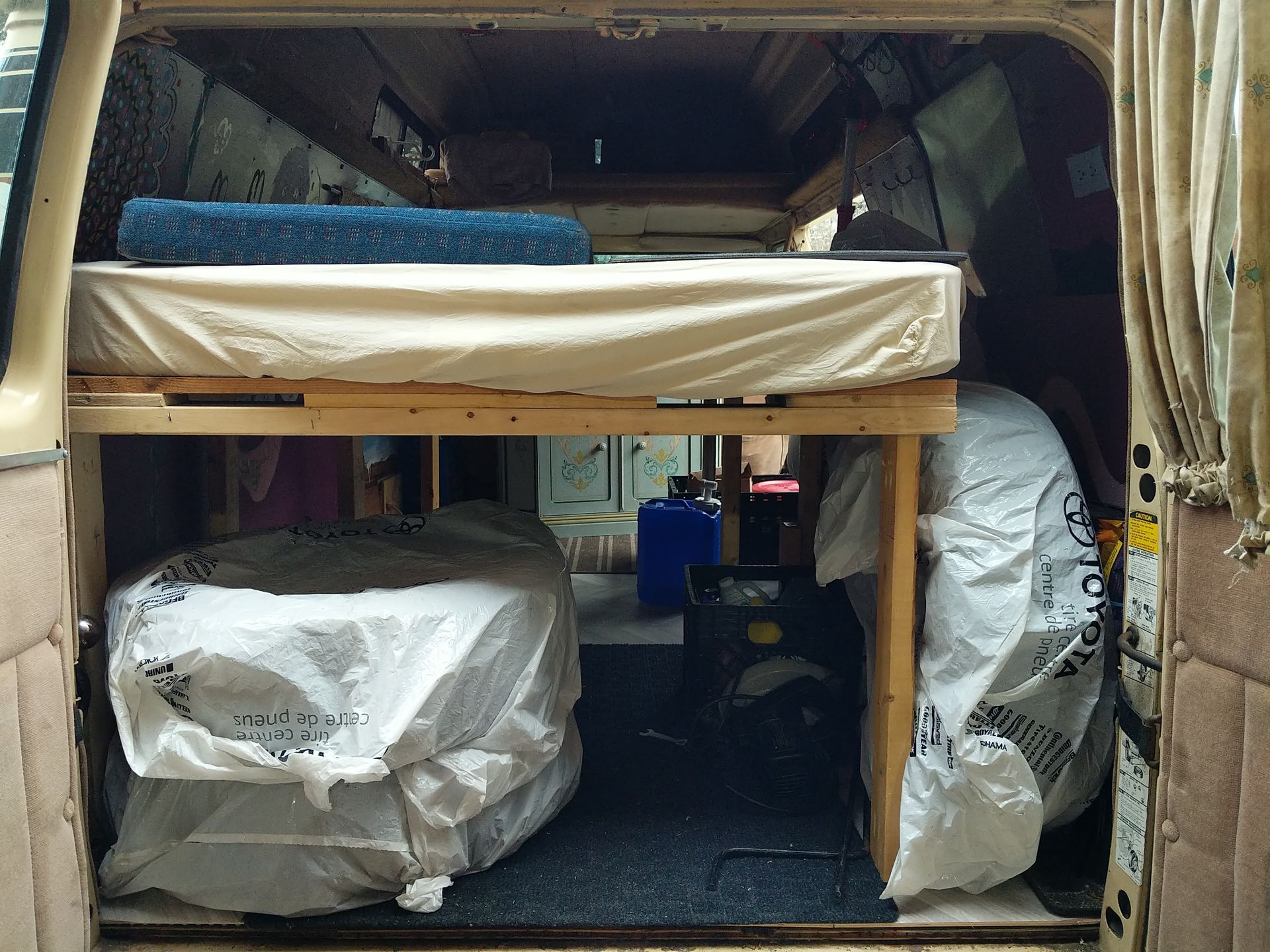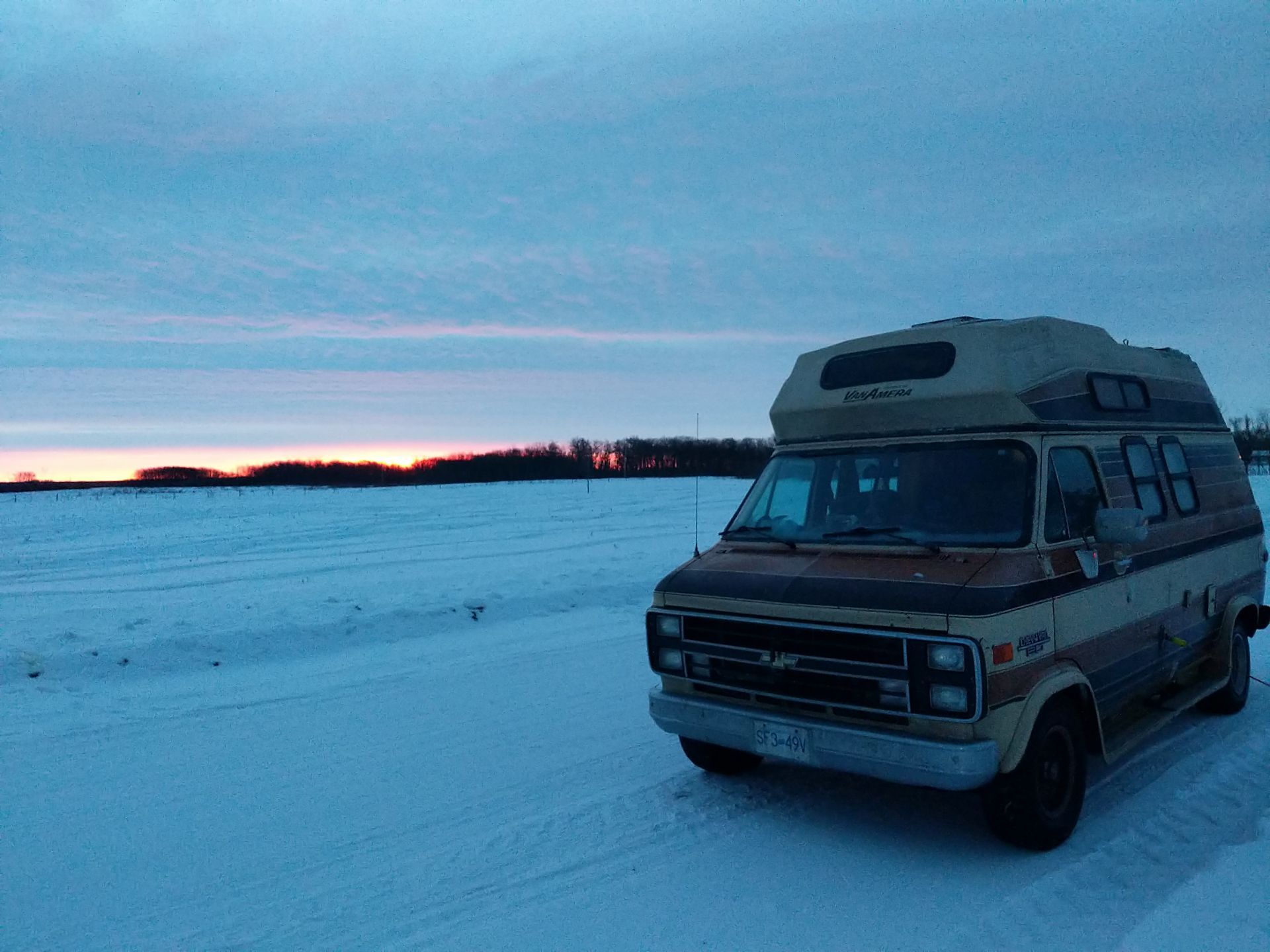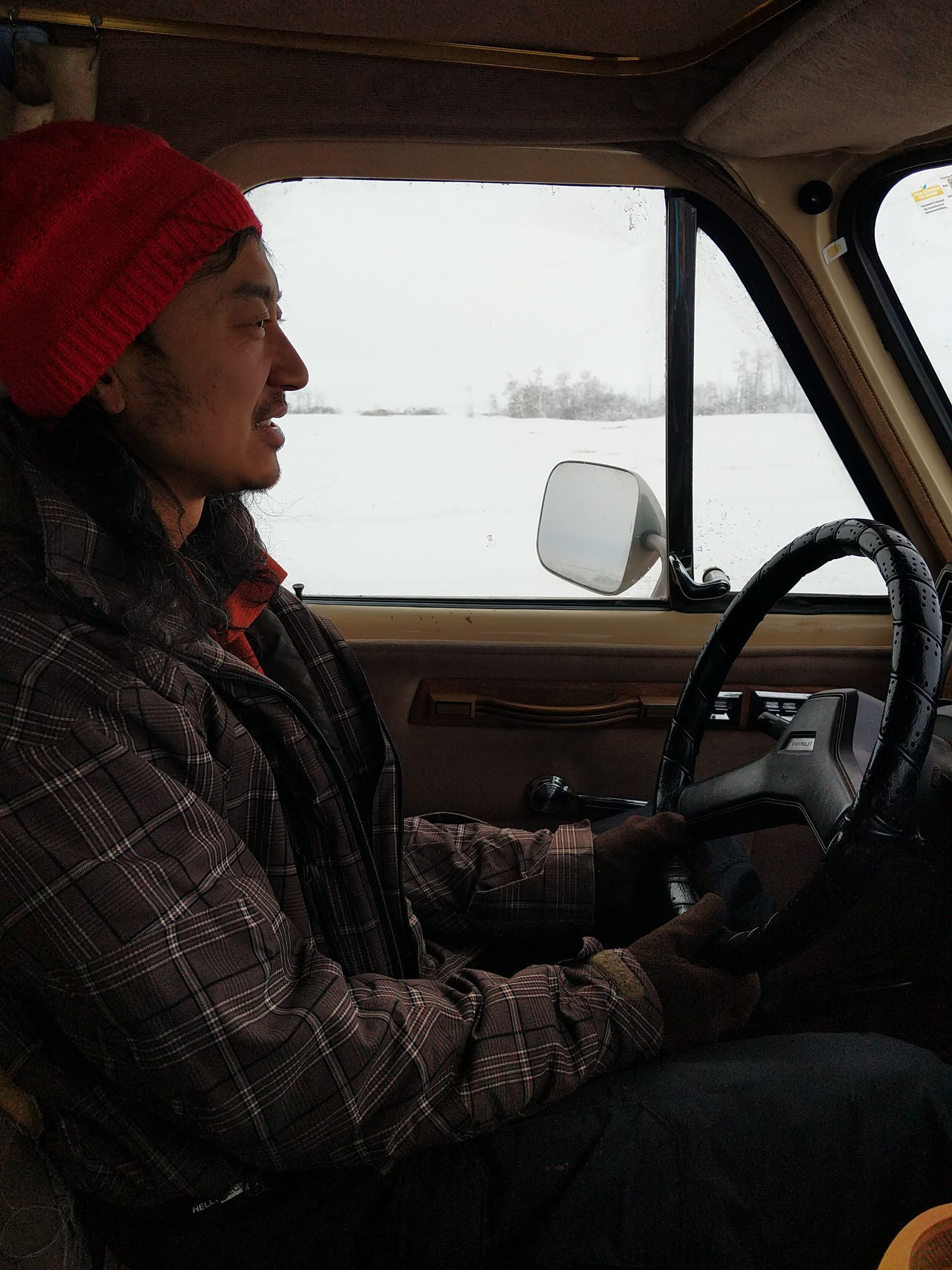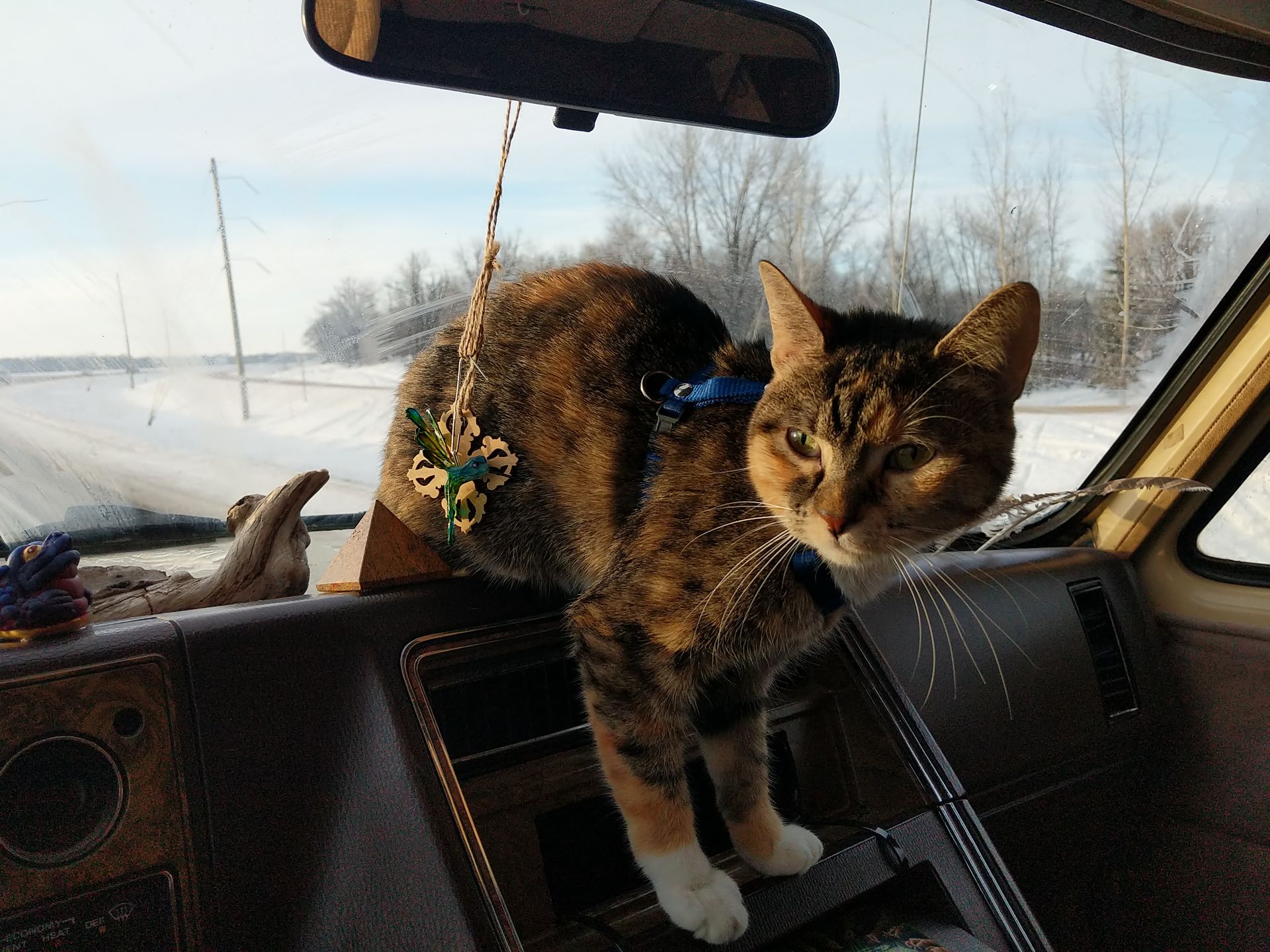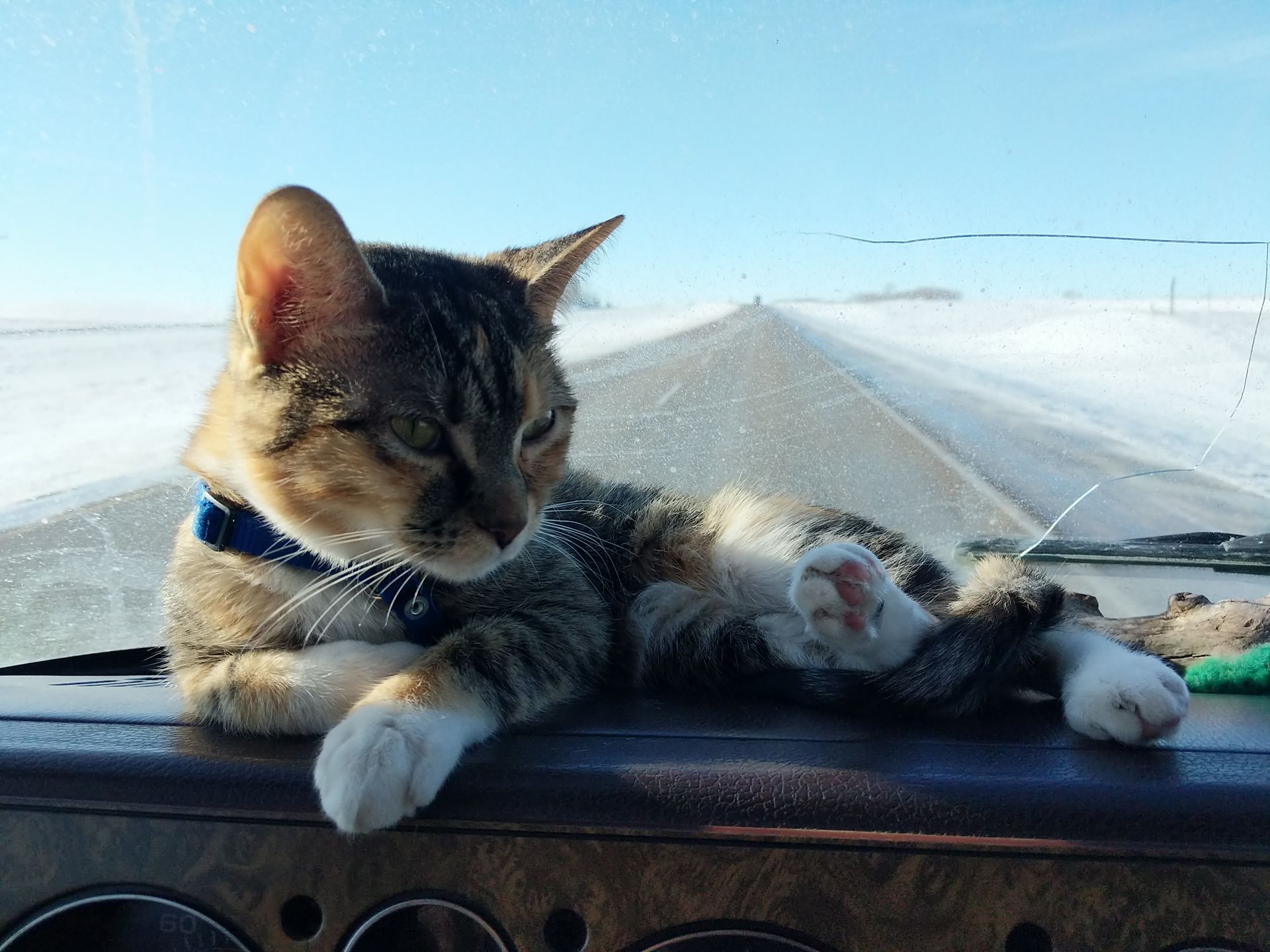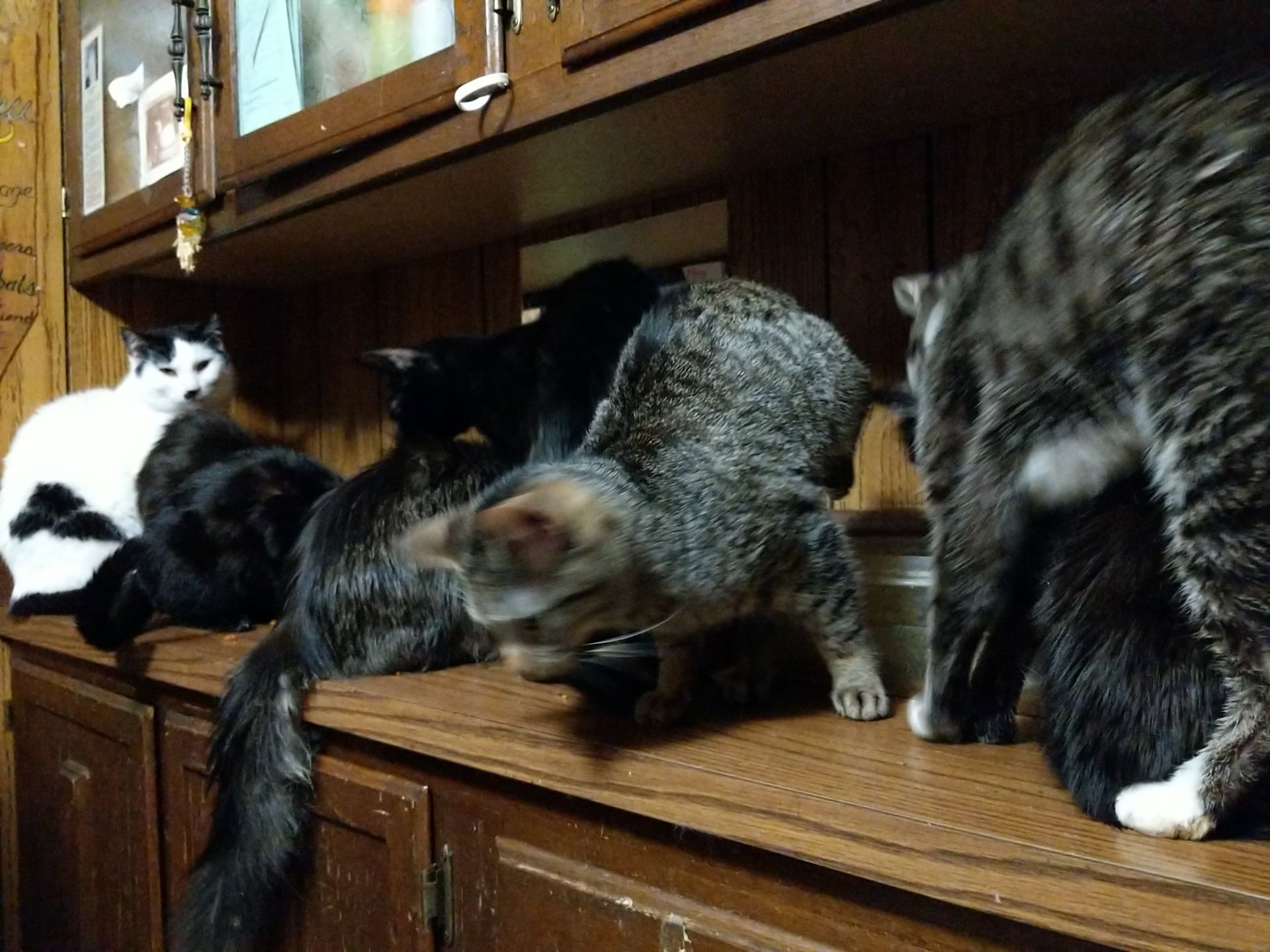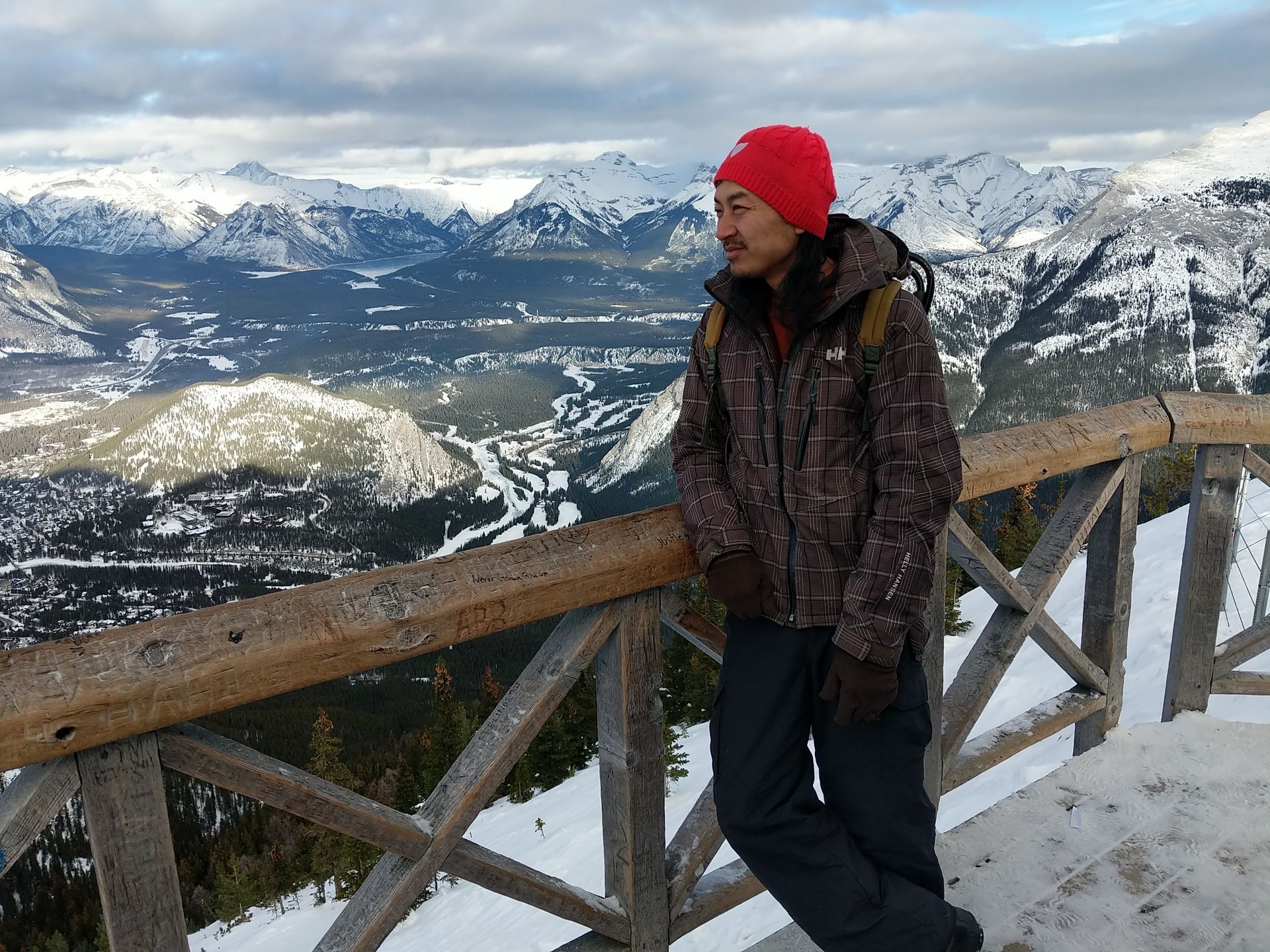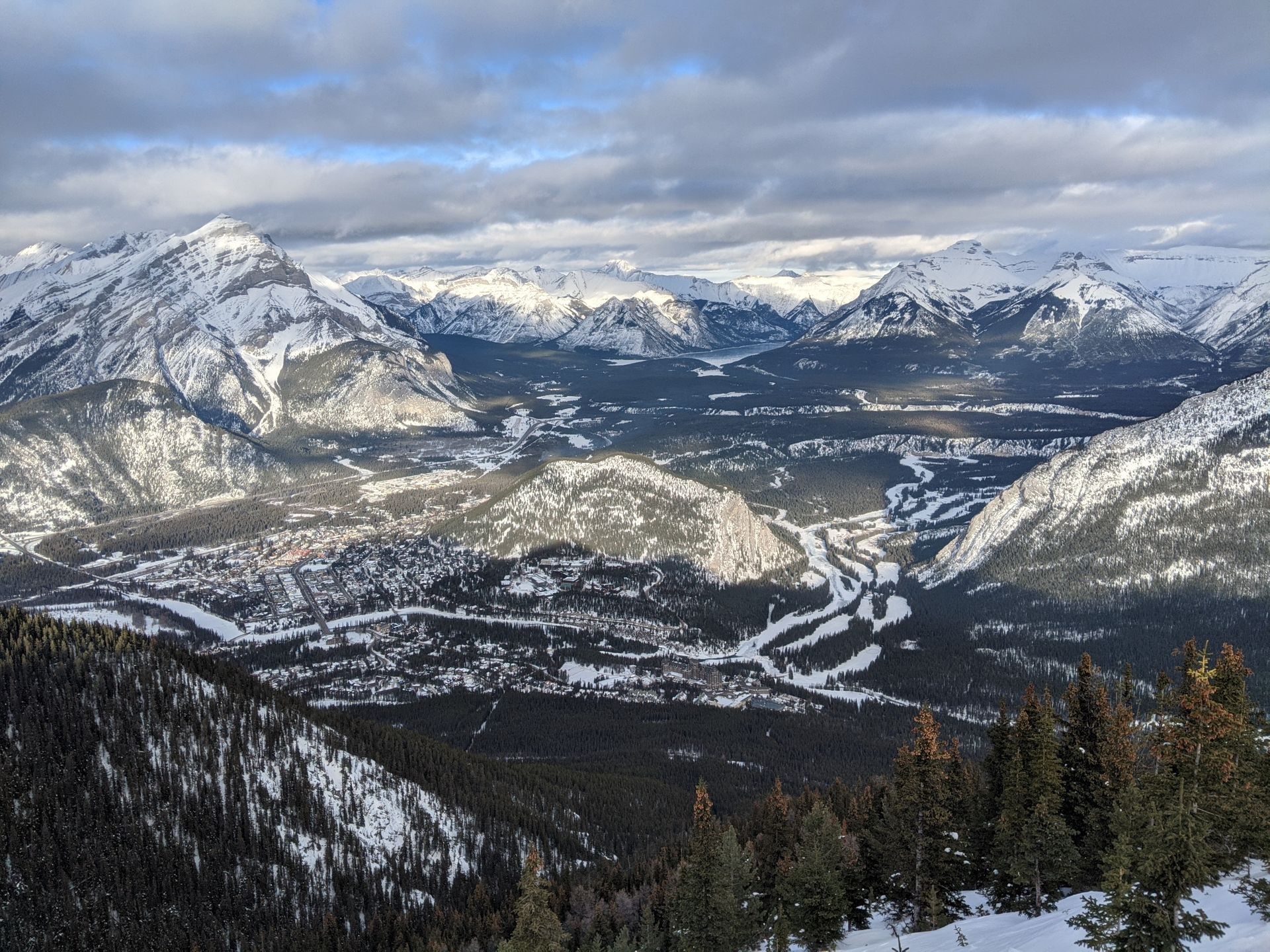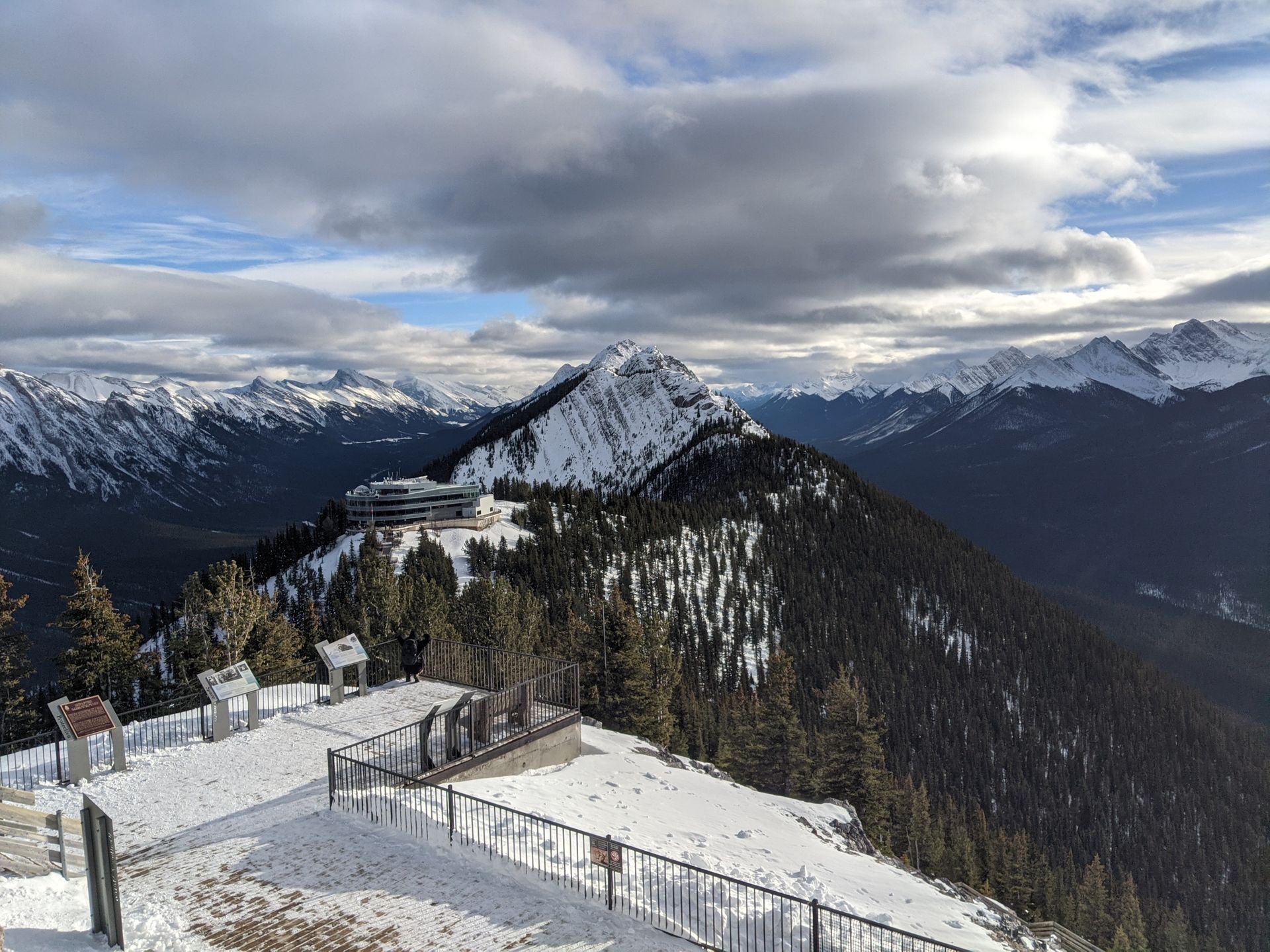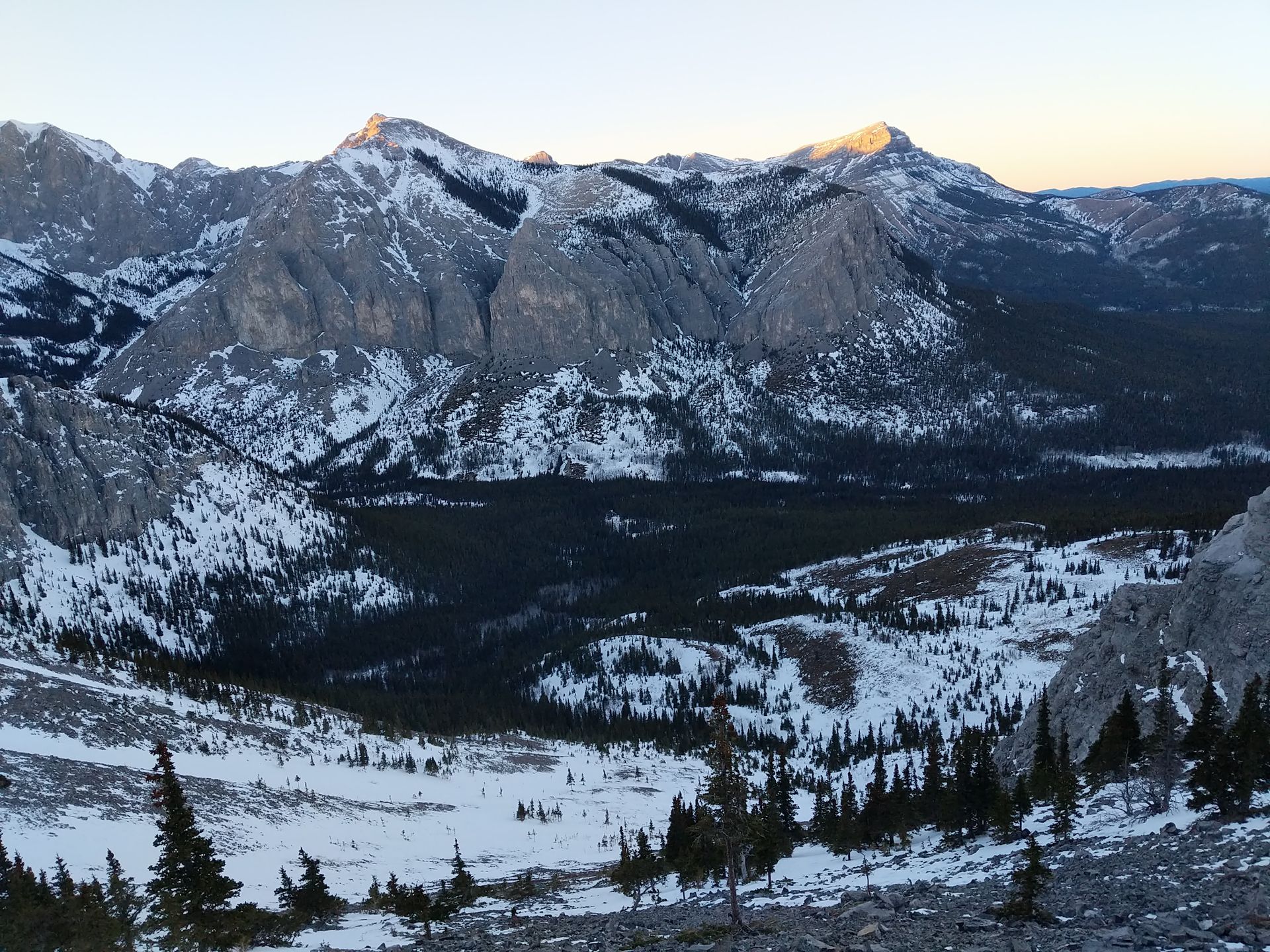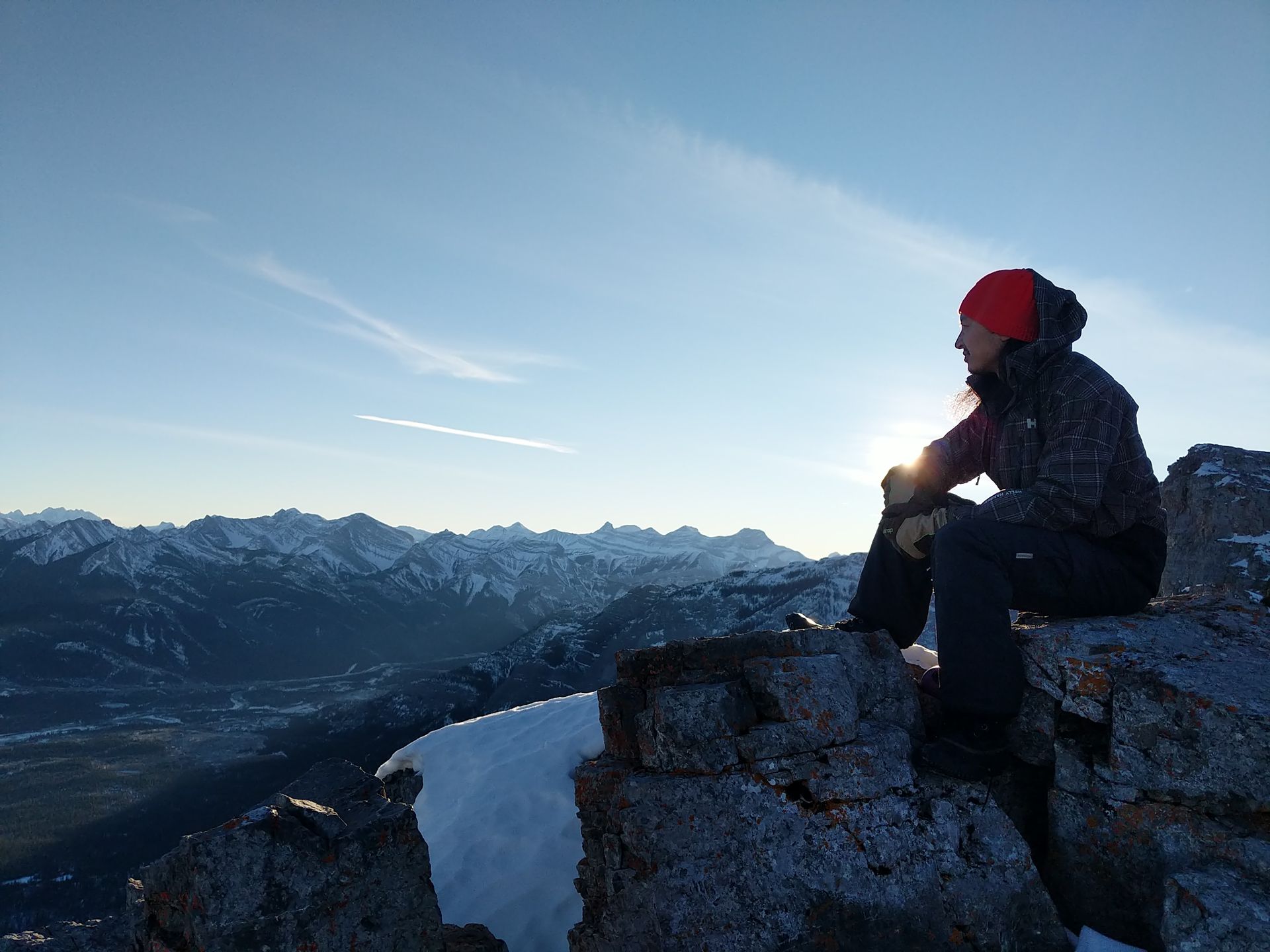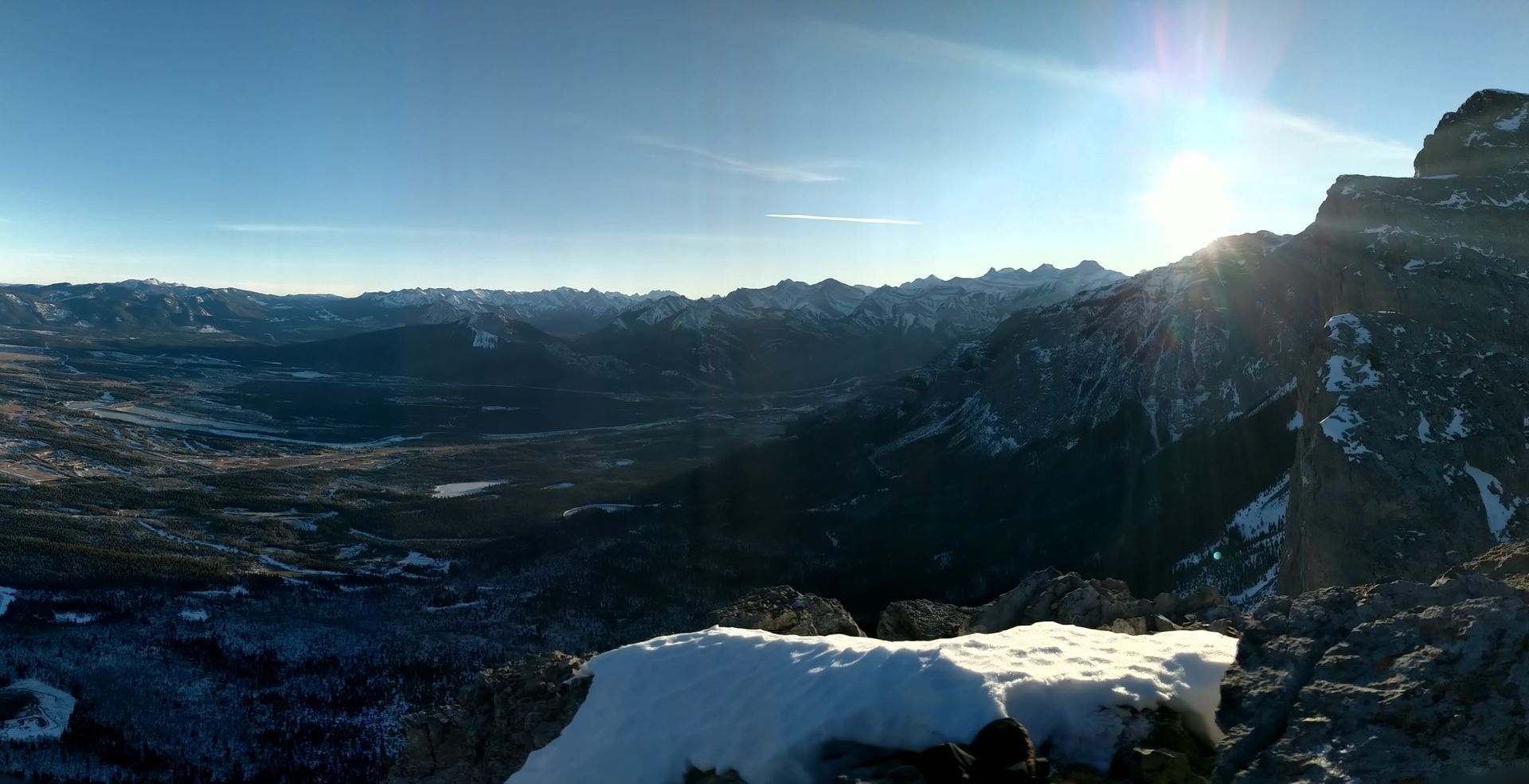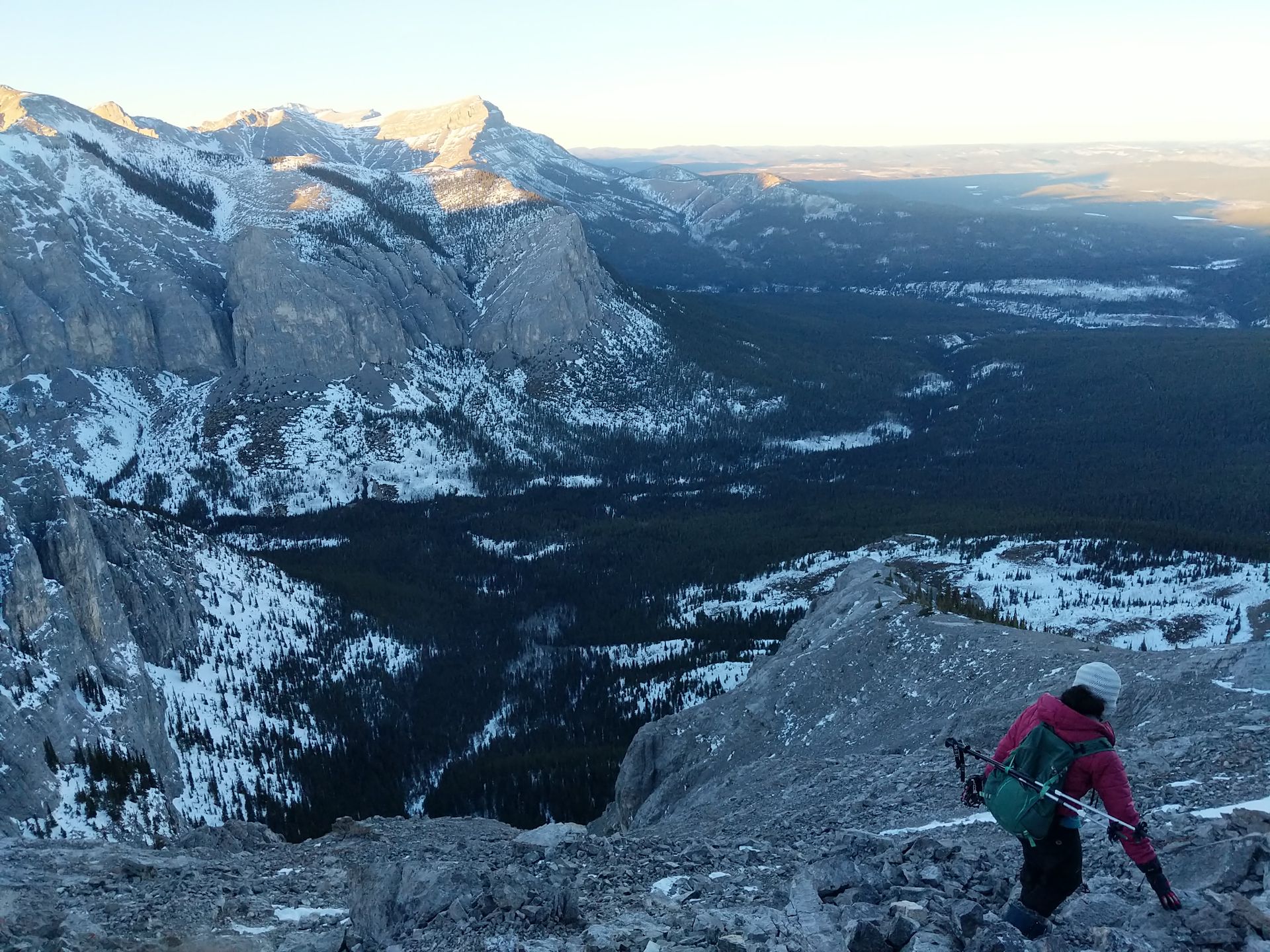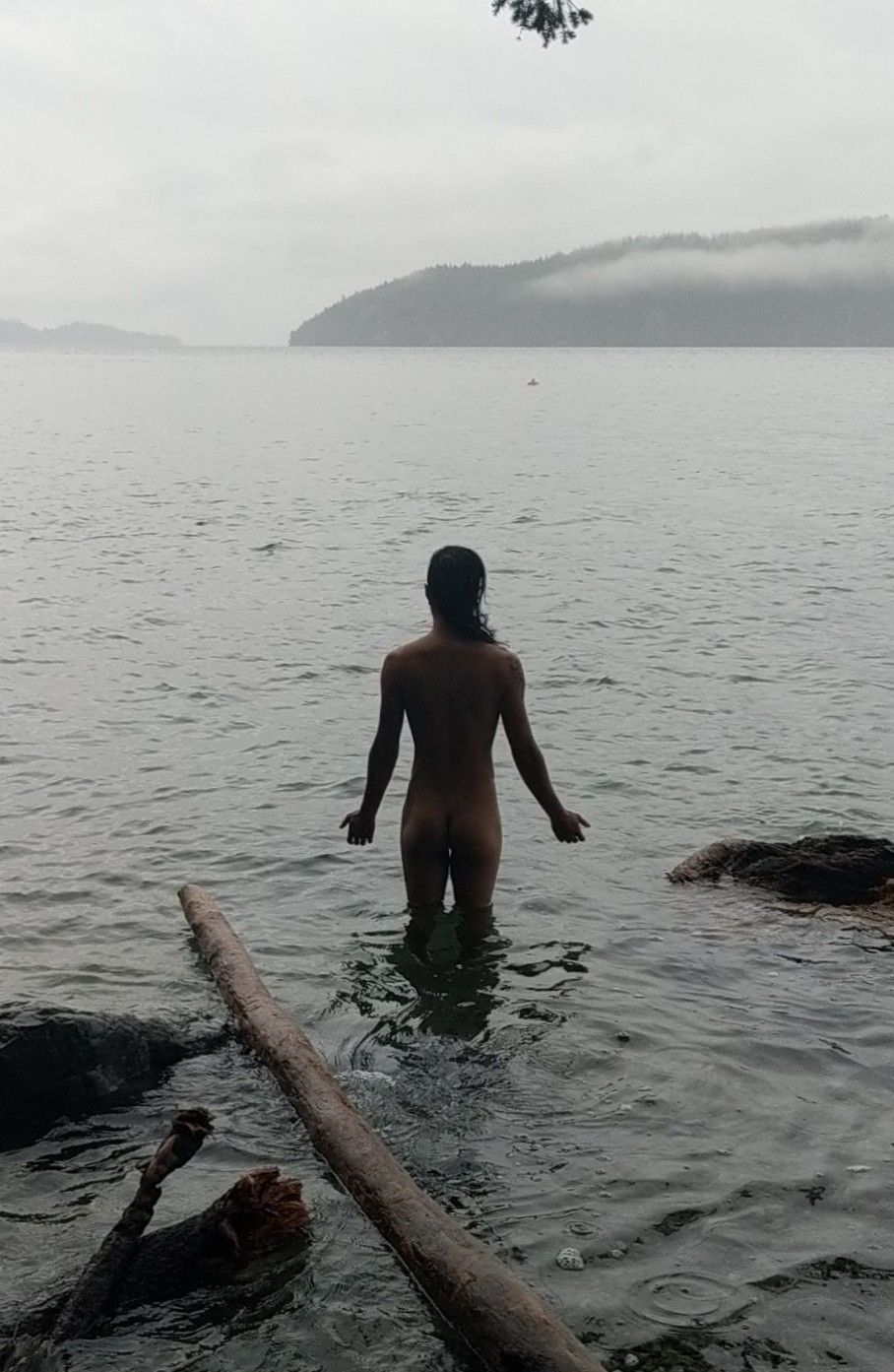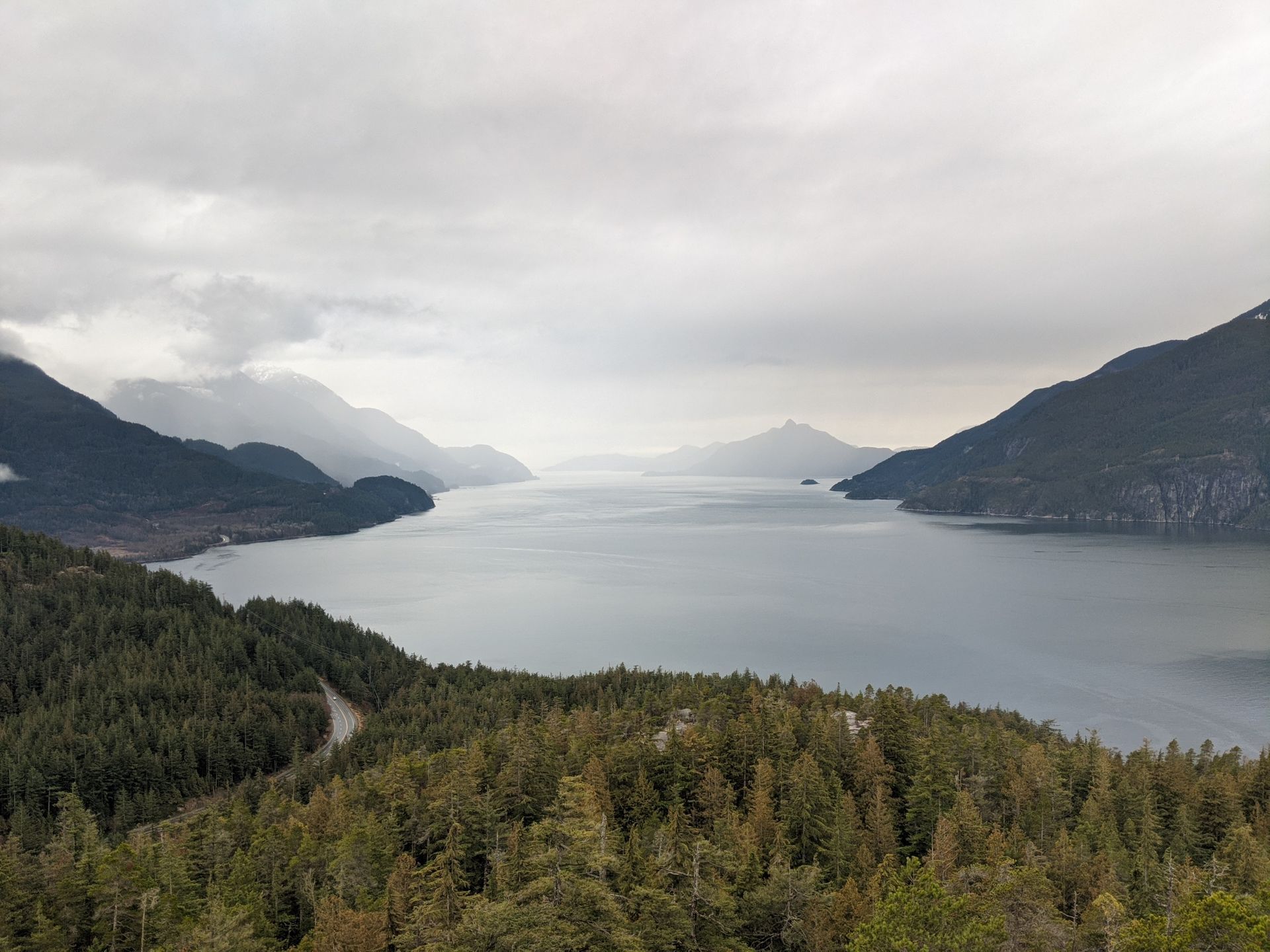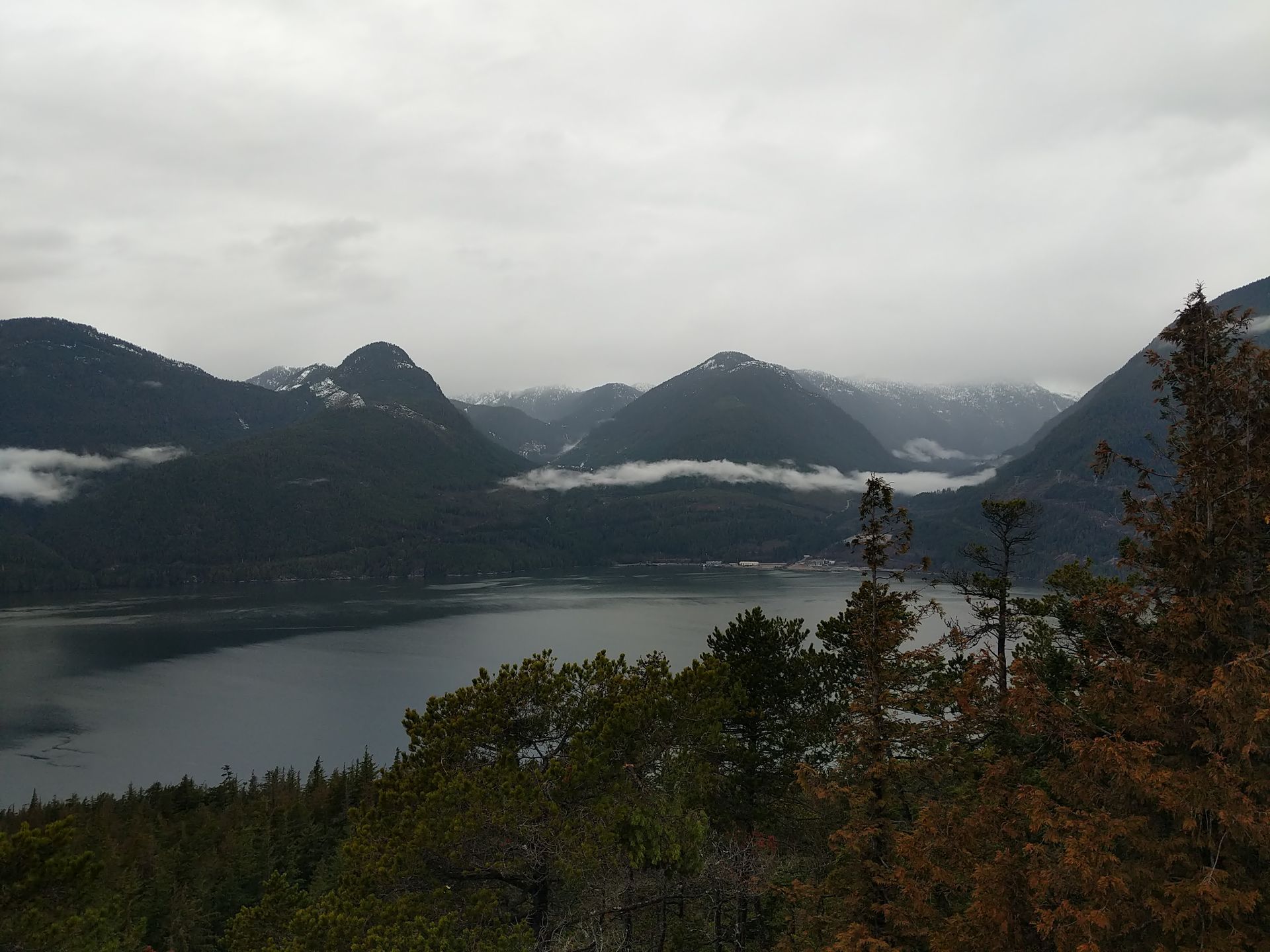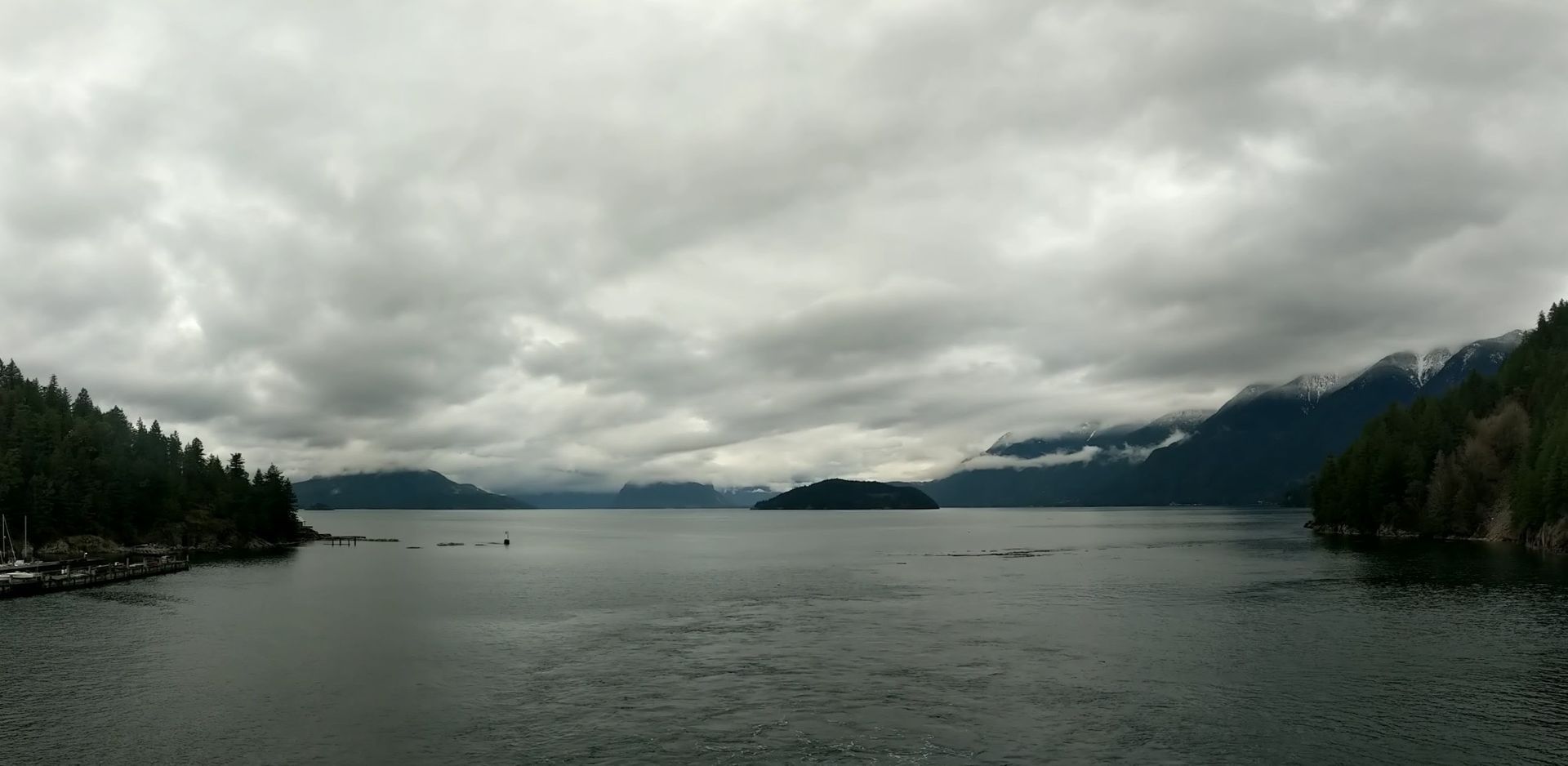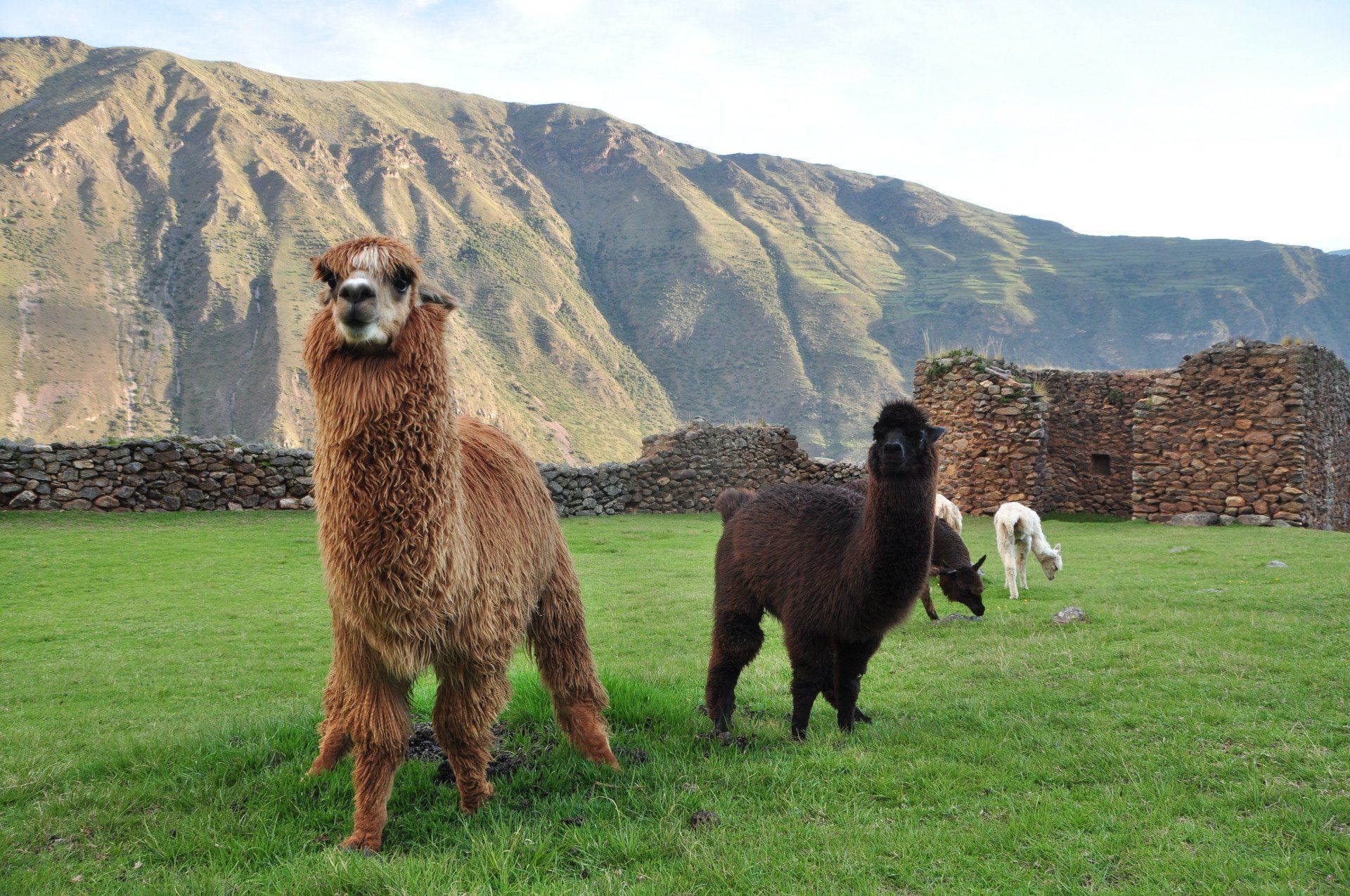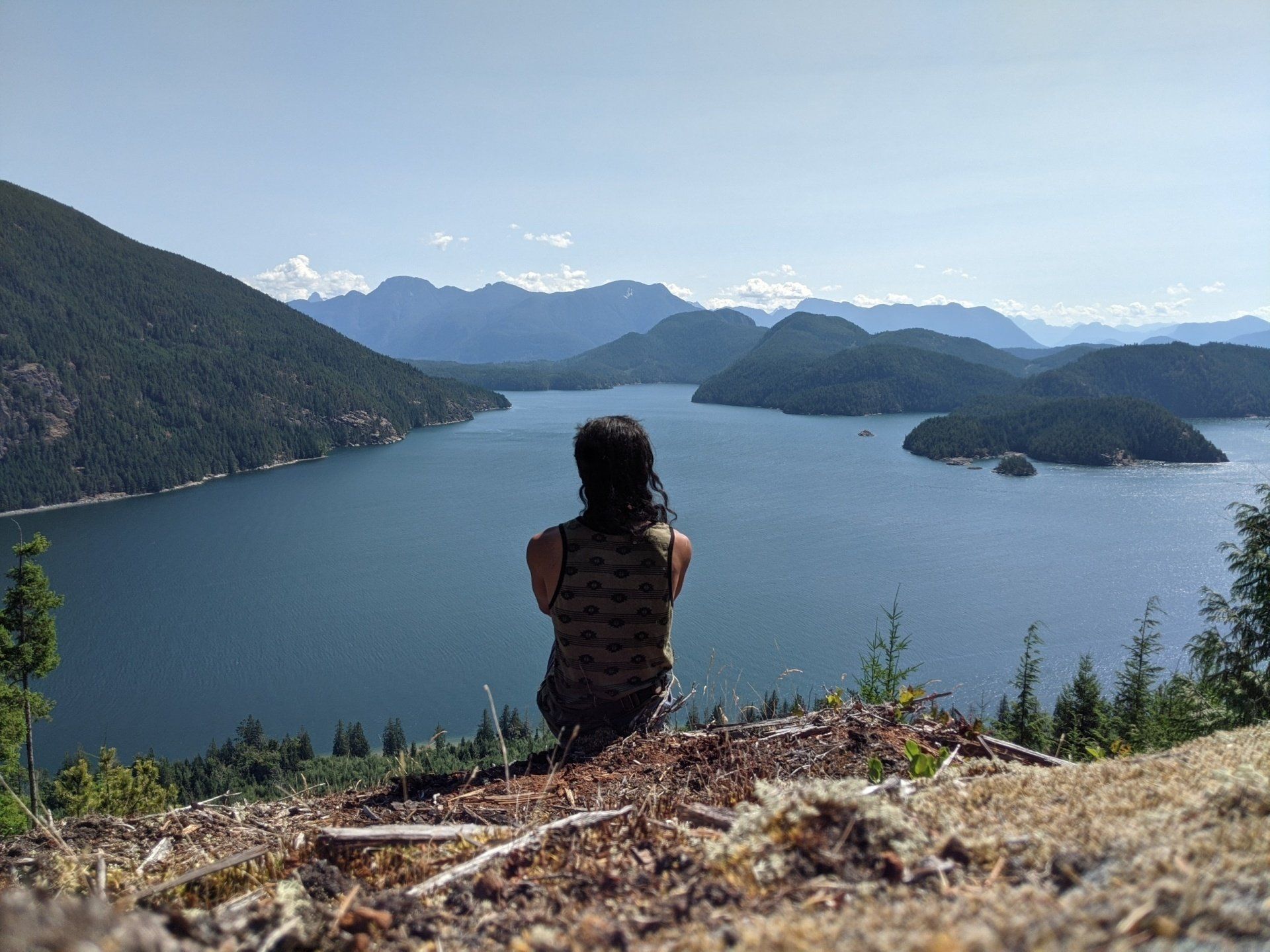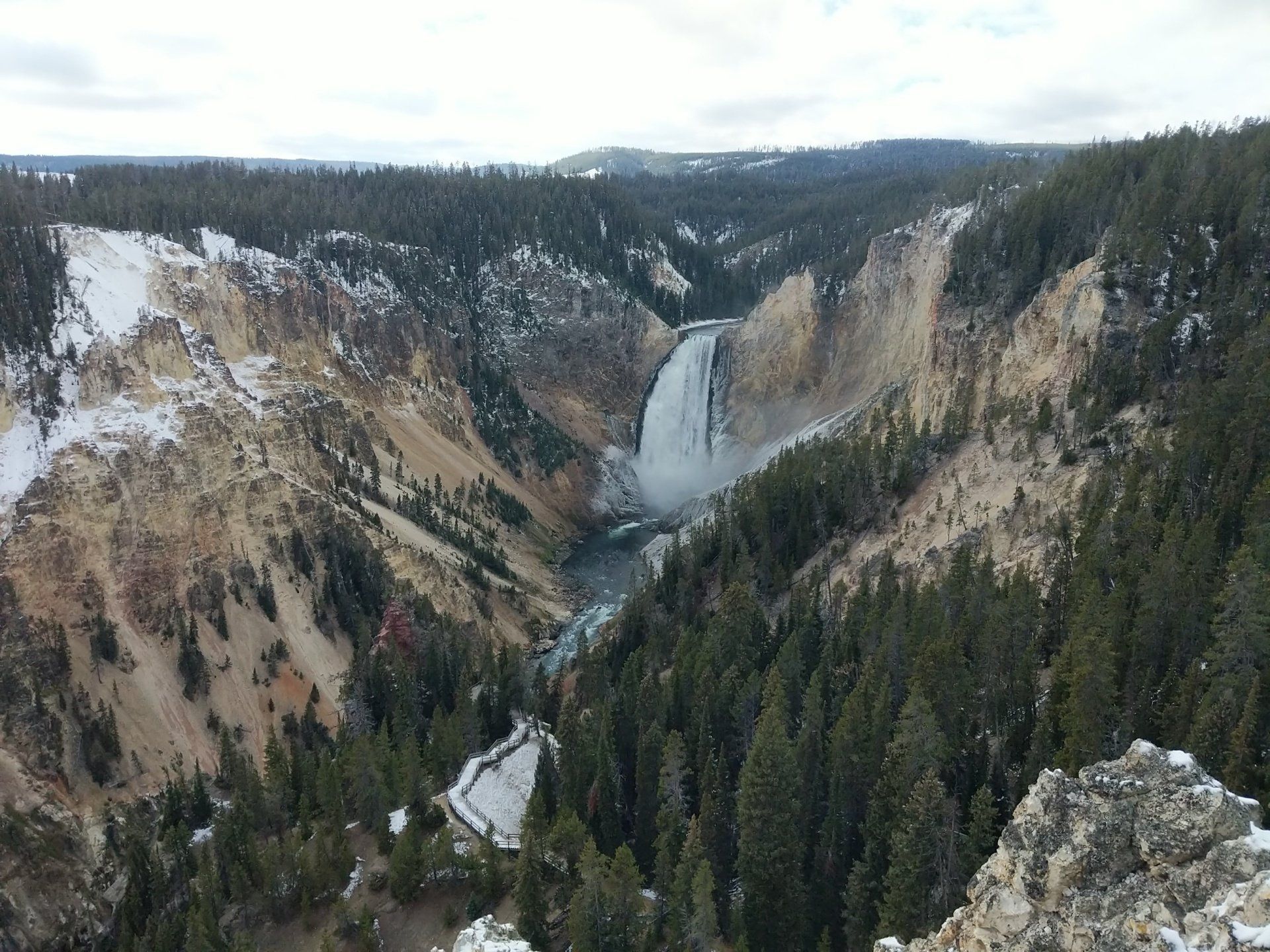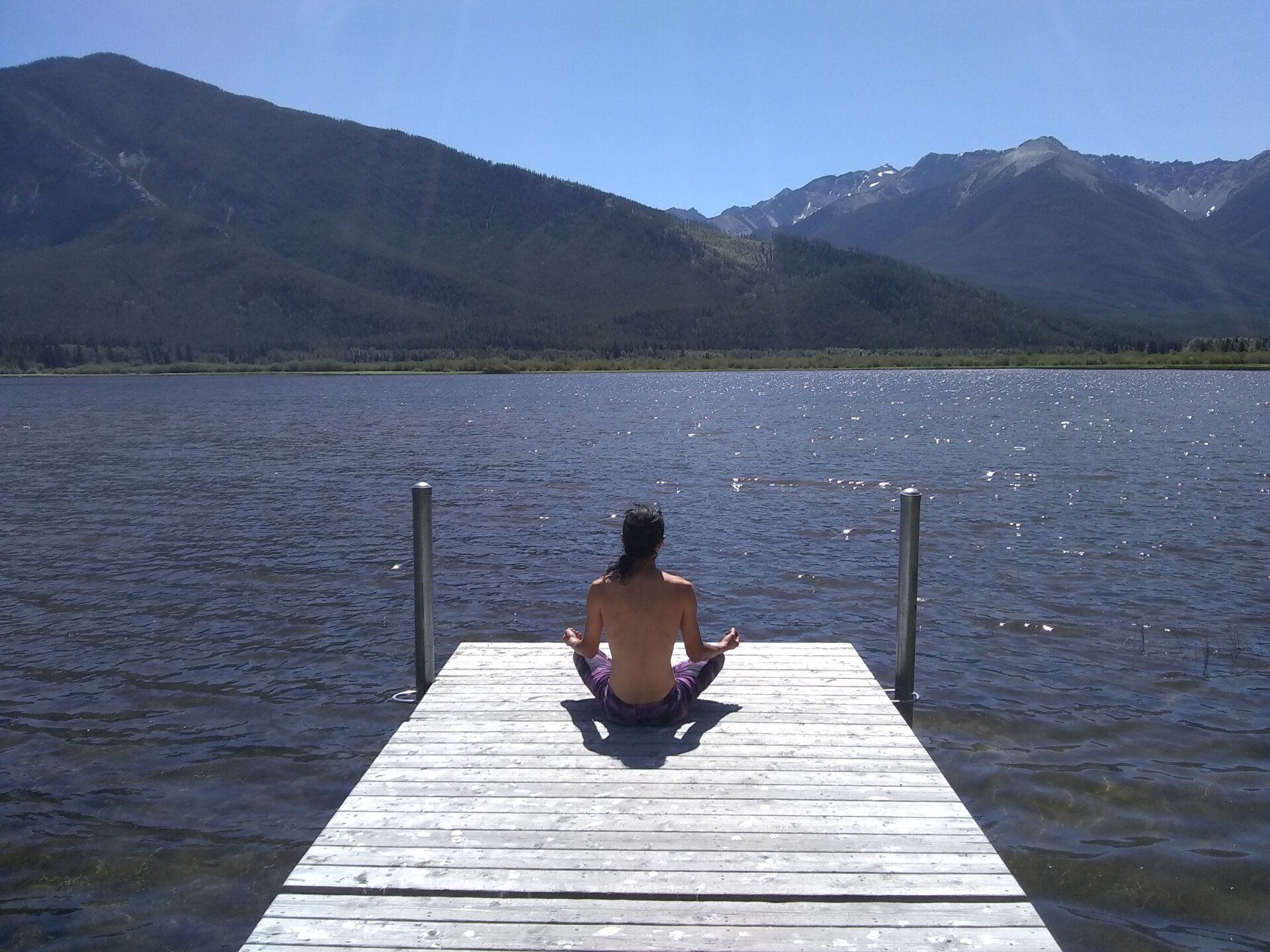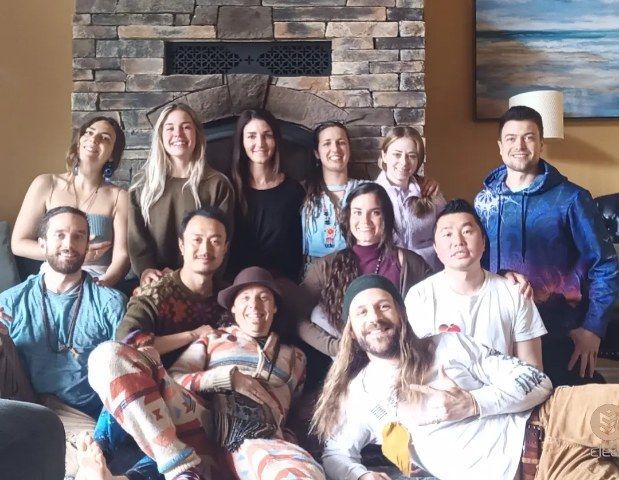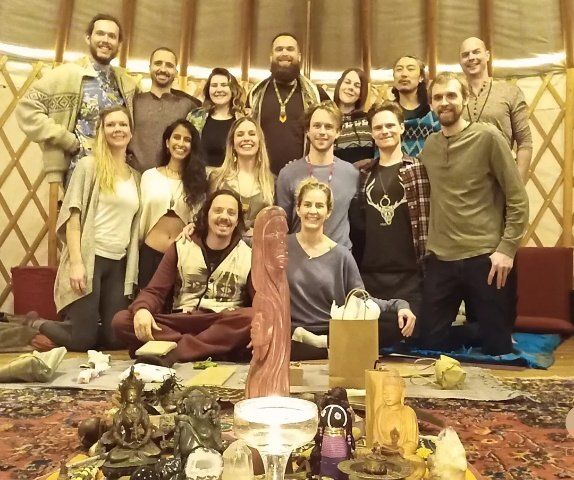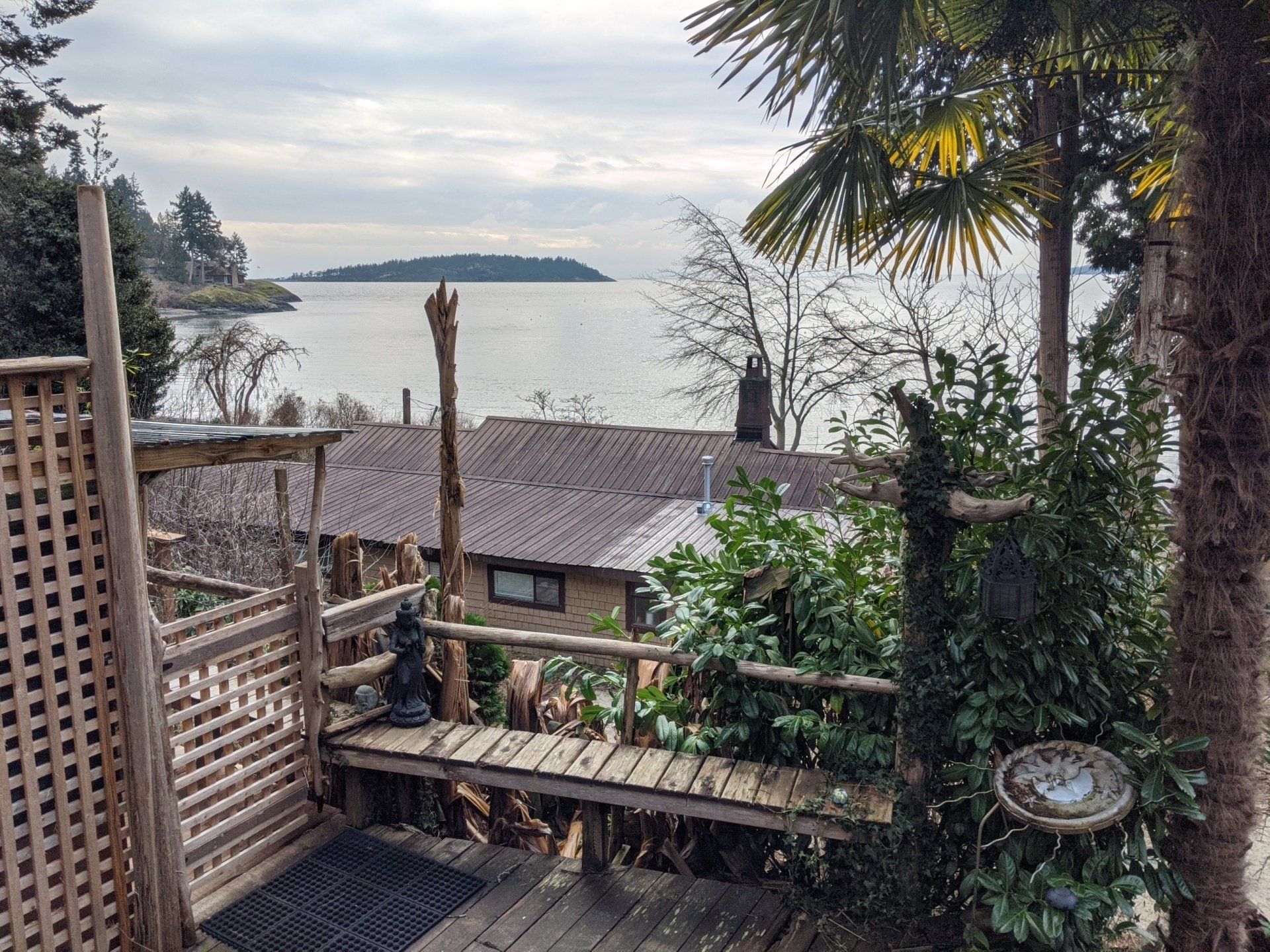Vanlife in Canadian Winter, Eh?!
Manual on How To Drive a 1987 Camper Van Across Canada in the Winter
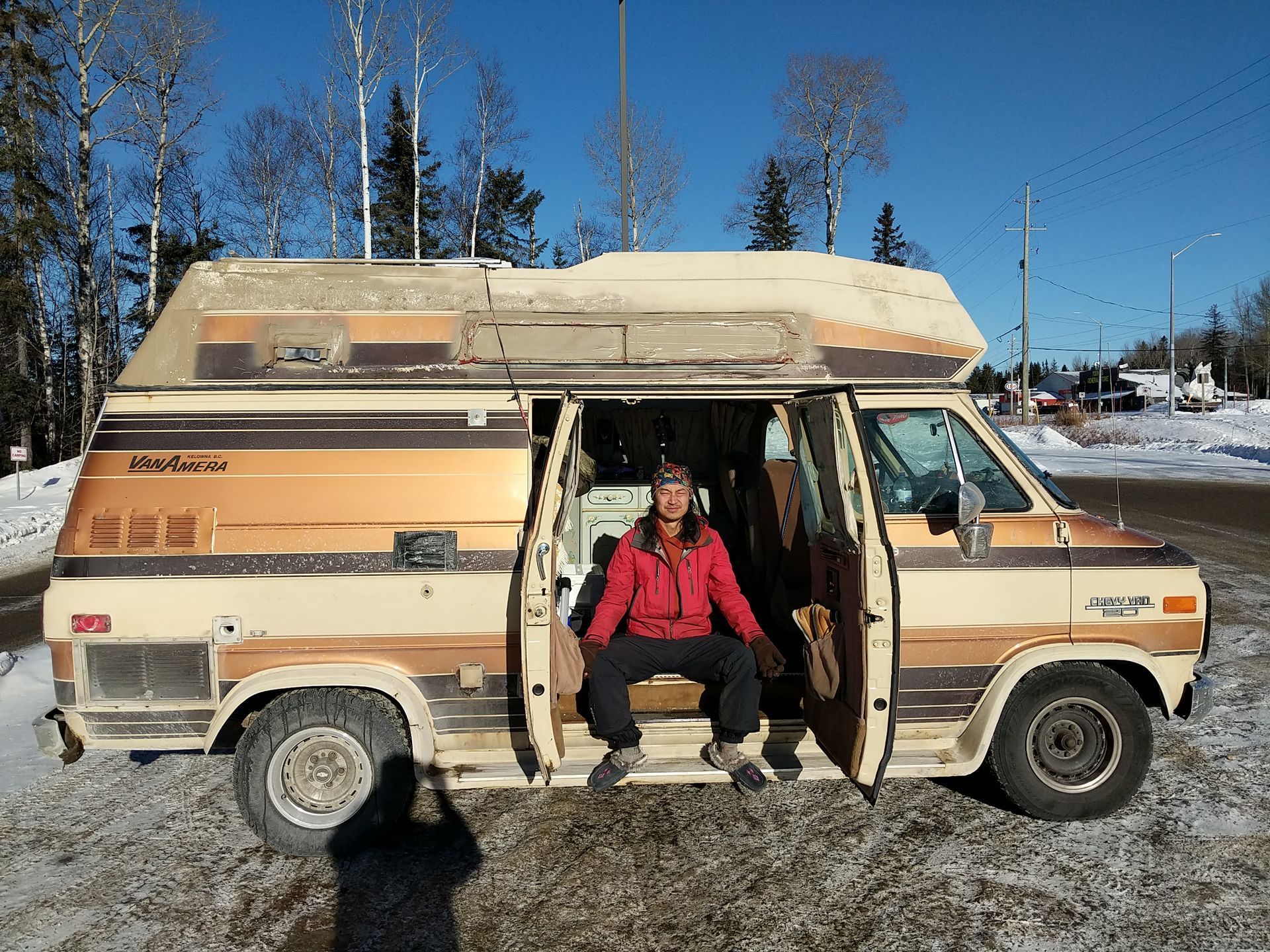
I drove out of Toronto with my 1987 Chevy G20 camper van bound for the west coast of Canada. I left just one month ago, on January 5th, 2023, along with my rideshare, Steve, and his cat Rascal.
I admit I was a little nervous about embarking on such a long road trip during a Canadian winter, in such an old camper van on a super tight budget. I have made this journey many times with a smaller more reliable car (completed five round trips). I even did the journey once by bicycle. The distance is almost the same as Madrid, Spain to Moscow, Russia, one end of Europe to another - 4,500 km.
But the three of us had adventurous spirits and open minds. I didn't know Steve at all, we found each other off a rideshare website, but he told me that he and his cat backpacked across Europe, and I was convinced. As for my camper van, I bought it last September, and then drove it from the west coast of Canada, across the United States and back in to Toronto. So I knew it was capable of making the trip, I just didn't know how it would handle a Canadian winter.
I maintained it as it should during my few months in Toronto, and even installed new more insulated floors and a new higher bed, greatly increasing storage underneath. The kicker for the roadie was a space heater and a way to plug it in, which we planned to do while sleeping overnight in the van during nights we didn't line up hosts. I crammed my life into Jupiter, my van which I christened while looking at its planet namesake in the night sky.
Day 1 - Sault Ste Marie, Ontario
In spite of the obstacles Steve, Rascal and I set out excited to be back on the road, and with a deep trust that the universe would guide and take care of us. I love the feeling of being on the move. Sometimes when I am on the road in-between places I wish that journey would never end, and I could infinitely watch new landscapes roll by. I settled quickly into this moving meditation. It helped that we left on an unseasonably warm Toronto day at +2 degrees Celsius.
We drove seven hours to Sault Ste Marie, in what was becoming Northern Ontario, but wasn't quite yet, simply because of how big Ontario is. When we arrived it was probably -4 degrees, much colder than Toronto. A friend of mine was out of town but let us plug in to his little office building. When we arrived I pulled out the extension cord, plugged it in to the office building, then to my van, and got the space heater got going.
My first night ever sleeping in a camper van in minus temperatures was an astounding success! In fact, it was so warm and toasty in the van that I was sweating inside my sleeping bag. This was even moreso impressive considering we slept in a 34 year old leaky vehicle, not one of those sleek, modern Sprinter Van conversions.
Day 2 - Thunder Bay, Ontario
We repeated this routine, driving around nine hours to Thunder Bay (still not out of Ontario yet). This time we pulled in to a hotel parking lot that had external plug ins for a few parking spaces. This is a common feature in parking areas of central Canadian cities that experience harsh winters. The cars here come with block heaters which, when plugged in overnight, can keep the engine warm enough to start up in the morning. We managed to plug our space heater in without any hotel staff noticing, sleep cozily in the van, and were on our way early the next morning.
Day 3 - Winnipeg, Manitoba
We finally escaped Ontario on Day 3, about 20 hours into the road trip. Ontario's winding highway through shield rock, conifer forests and serene lakes, gave way to straight and fast freeway through flat and open Prairie farmland. The speed limit jumped from 90 to 110 km/h, but I never took Jupiter over 100 km/h. Slow and steady wins the race... Or at least doesn't stretch the old engine beyond its limits.
We did though experience a flat tire... More than a flat. One of Jupiter's tires exploded the way you see happen to trucks, where the tires lose lots of tread on the highway. Thankfully we were able to pull over safely, and had the right tools, plus extra winter tires in the van. We were able to change the tire without incident and continue on our way. We drove a total of seven hours to Winnipeg where our first host awaited, a friend of Steve's, as well as warm and cozy indoor beds. We also took the opportunity to share a home-cooked dinner.
Day 4 - Kennedy, Saskatchewan
On Day 4 we took a more relaxed drive under six hours to get to another of Steve's friends in rural Saskatchewan. Relaxed, except that the colder temperatures of the Prairies rushed in to the van at highway speeds, outpacing the van's heating system, turning the van into a fridge. Steve and I layered up, but my hands and toes, which are quite vulnerable to the cold, were nearly frozen by the end of the day. We would go on to brave a few more of these frigid days in the van before warmth would be restored.
We reached the tiny town of Kennedy, where Steve adopted his own cat Rascal from his friend's home. Apparently Rascal adapted well to his new way of life with Steve as a nomadic cat. He didn't make a mess in the van, and he kept us entertained on the road. Unfortunately he didn't take well to returning to his birthplace.
He was antisocial with the other cats, even his own mother, hissing and swiping at them when they got near! Speaking of the other cats, there were around 30 of them in this house! Their population boomed since Steve was last here a few years ago and adopted Rascal. It doesn't help that the cats aren't neutered or spayed and are outdoor cats. I took the opportunity to give myself cat therapy, and bathed myself in their presence.
That night we plugged in to Steve's friend's house, and slept in the van with the space heater running, on a -15 degree night! Surprisingly it was still warm and toasty, and again I had to shed layers in the middle of the night. It was empowering to experience and know moving forward that I could sleep in my camper van in the middle of Canadian winter, in case of some survival situation that hopefully will never manifest.
Day 5 - Calgary and The Rockies
In an effort to help his friends with population control efforts (or lack thereof), Steve took two of their cats along with us, with the aim of dropping them off at an animal shelter along our route. Unfortunately all the animal shelters along the way weren't accepting new dropoffs. We ended up driving them all the way to our next destination in Calgary.
This was a long day, nearly 11 hours of driving! But we took on this big day knowing a sanctuary awaited us. We arrived at another of Steve's friends. Steve would spend three nights here, and eventually the city's animal shelter accepted our two feline strays. After spending one night here I took off to the Rocky Mountains for my next two free days, opting for mountain adventures over staying in the city.
It was unseasonably warm once again, though this time it was partially due to a climate phenomenon unique to Calgary called the Chinook, warm winds that blow in from the Rocky Mountains. The day after arriving in Calgary, it was +4 degrees! I drove by myself to Banff and did the hike up Sulphur Mountain to the gondola visitor centre. I bum slid down the steep and slippery trail back to the car, getting down in almost one quarter of the time it took me to hike up!
That night I stayed with my friend Francine in the nearby town of Canmore. The next day we hiked Mt Yamnuska, a classic hike along the edge of the Rockies staring long into the flat Prairies. I drove back to Calgary that night, filled up by the beauty of the Rockies, and grateful for the reprieve in winter weather that allowed me to crush two fun hikes.
Day 6 - Vancouver
With two full days of rest, movement and nature immersion, I felt revitalized and ready for another big driving day. Not that I was doing all the driving. Steve drove whenever I asked him to, usually in the middle of the day, allowing me to nap in my bed in the back and recover enough energy for the final stretch.
It took 11-12 hours to do the final big stretch, albeit an incredibly beautiful one, through the Rockies, then several more mountain ranges of British Columbia. One little feature that served as an ally, was the time zones. Every time we crossed a time zone we would gain an hour. On this last big day, we arrived in the Vancouver area at what would have been 10 pm, but because we entered a new time zone, we arrived at 9 pm. All in all we crossed three time zones, from Eastern to Central, to Mountain, and finally Pacific Started Time (PST).
We ended this day at the fourth of Steve's friends! By the time we reached Vancouver, we arrived in the mildest climate of Canada. It was +5, grey and rainy. I slept in the van without plugging in.
Day 7 - Squamish
The next morning we drove through busy Vancouver, along the dreamy Sea-to-Sky Hwy along the ocean, north in to another mountain town, Squamish before the morning ended. Here our road trip finally ended, and I dropped Steve off. Steve split the gas, brought his lovable cat Rascal, shared driving responsibilities, and provided places to stay at his friends', but above all he was very easygoing and able to go-with-the-flow, a rare quality especially when searching for someone to share this kind of adventure with.
The good weather seems to have followed me west. After dropping Steve off, I did a few more hikes in the Coast Mountains, while staying with a friend in Squamish. I followed this up with a few days in Vancouver before taking the ferry back to Vancouver Island and the gulf islands, where my heart is.
West Coast is the Best Coast
The timing as usual worked divinely in my favour, as I made it back to the west coast just in time to sign up for the next phase of my breathwork facilitator training, a 5-day retreat in a quiet retreat centre where I could go in an outdoor hot tub and then cold dip in the river just a few steps away.
I'll include some road trip statistics here because I'm a nerd:
> driving time ~55 hours over 7 days, average of 8 hours
> driving distance ~4600 km
> consumed ~750L gas, around $1200 total ($600 each)
> efficiency ~16.5L/100km (for comparison, my old Toyota Yaris ~8L/100km)
Part of the reason I road tripped to Ontario for a few months, before road tripping back, was knowing I won't be planning on coming back to Ontario again for a good awhile. I feel really ready to ground down on the west coast and manifest my vision of community, healing through massage and breathwork, and music and dancing.
As I lower my physical vibration, it helps to have yet another memorable adventure under my belt!
